In 2022
AGIO for OFFICE
Seven Layouts and their Forms of Communication
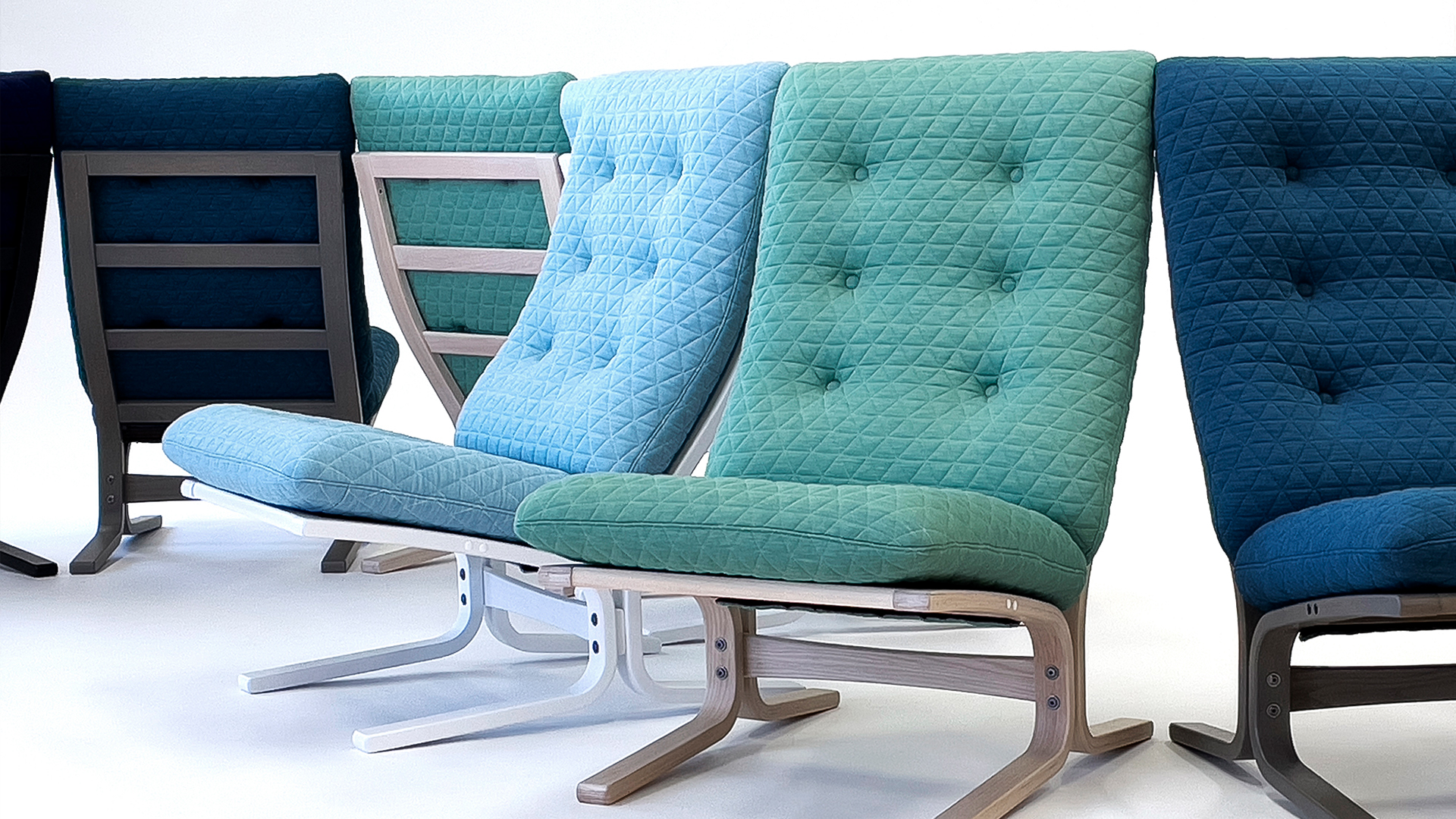
In 2022
Seven Layouts and their Forms of Communication
For the past 44 years of our 63-year history, we have dedicated ourselves to the development of molded plywood technology. Among our many products, AGIO, which represents Fuji Furniture’s expertise in molded plywood, encapsulates numerous appealing features—from design and comfort to functionality and environmental consciousness. Since the release of the initial model in 1978, AGIO has gone through seven generations of minor changes and introduced over 40 derivative items. Let’s explore the development history of AGIO and uncover what makes it so special.

Until the 1970s, many of Fuji Furniture’s sofas featured frames that were fully upholstered, and there were very few designs where wooden frames took center stage, as they do in Fuji Furniture’s current designs. Inspired by Scandinavian molded plywood products, Fuji Furniture set out with the goal of creating sofas where wooden frames would be the focal point, and thus began the development of molded plywood technology.
Although specialized large-scale equipment was introduced, creating products with clean, curved lines was not achieved immediately. Molded plywood is a delicate processing technique, and every material, from the veneer to the paint, influences the final result. In order to bring their envisioned designs to life, Fuji Furniture engaged in a process of trial and error, refining veneer selection, adjusting the pressure and heat applied, and experimenting with different paints.
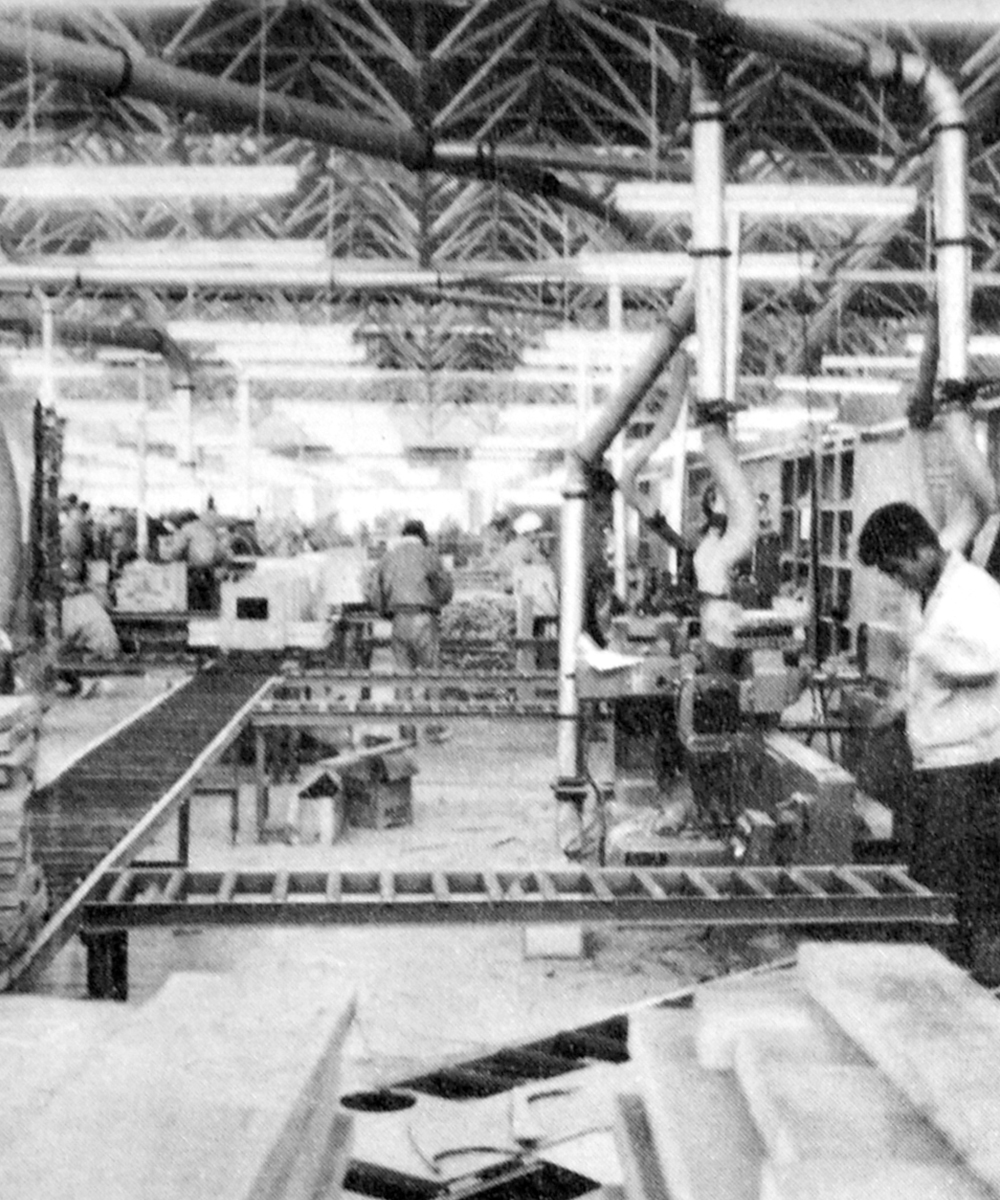
Until the 1970s, many of Fuji Furniture’s sofas featured frames that were fully upholstered, and there were very few designs where wooden frames took center stage, as they do in Fuji Furniture’s current designs. Inspired by Scandinavian molded plywood products, Fuji Furniture set out with the goal of creating sofas where wooden frames would be the focal point, and thus began the development of molded plywood technology.
Although specialized large-scale equipment was introduced, creating products with clean, curved lines was not achieved immediately. Molded plywood is a delicate processing technique, and every material, from the veneer to the paint, influences the final result. In order to bring their envisioned designs to life, Fuji Furniture engaged in a process of trial and error, refining veneer selection, adjusting the pressure and heat applied, and experimenting with different paints.

Finally, the curved lines that matched the design drawings were achieved, leading to the release of the first product, “Rosetta.” With a back frame featuring short, wave-like curved rear legs and a deep seating frame, its design differs significantly from today’s AGIO. The design of the frame, which integrated together the seat and front legs with the back and rear legs, was rare and challenging in Japan at the time, as it was difficult to ensure durability.
The frame was made from rubberwood, with craftsmen manually drawing wood grain patterns before staining it mahogany and finishing it with a urethane coating. While woods like mahogany, teak, and rosewood were considered luxury materials, they were rare and difficult to obtain. The practice of manually drawing wood grain, which is almost unseen in modern furniture, was an ingenious solution born out of the circumstances of that time.
To achieve a comfortable seating even with thin cushions, nylon rope was used for elasticity. The ropes were threaded through holes drilled in the frame, a labor-intensive process performed by hand for each piece. Compared to today’s AGIO, the seating experience was said to have a deeper, more sinking feel.
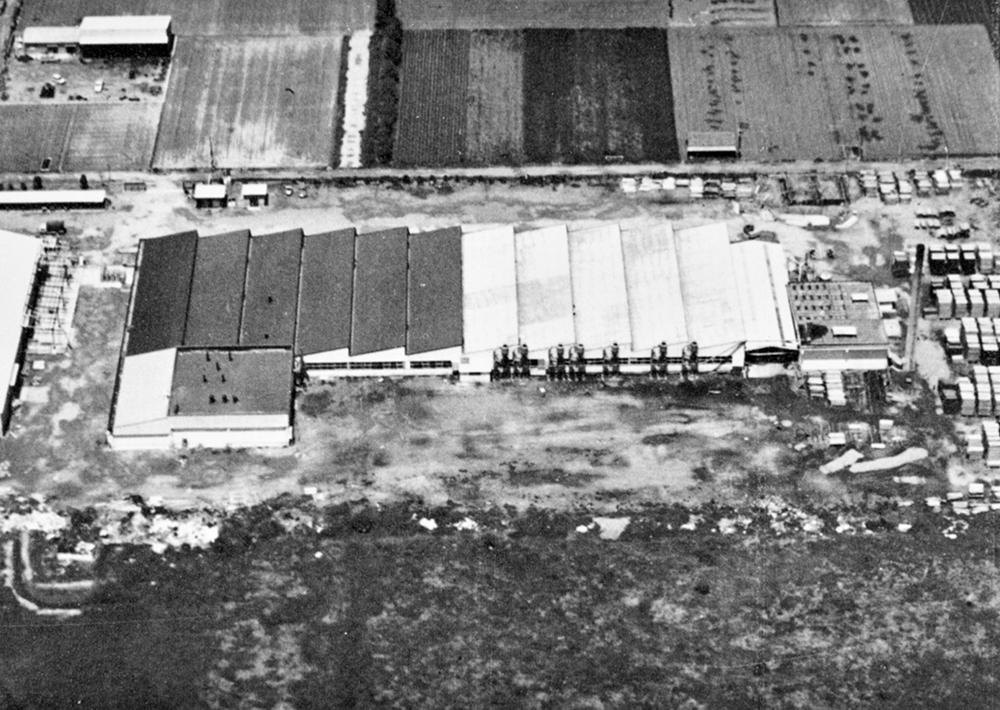
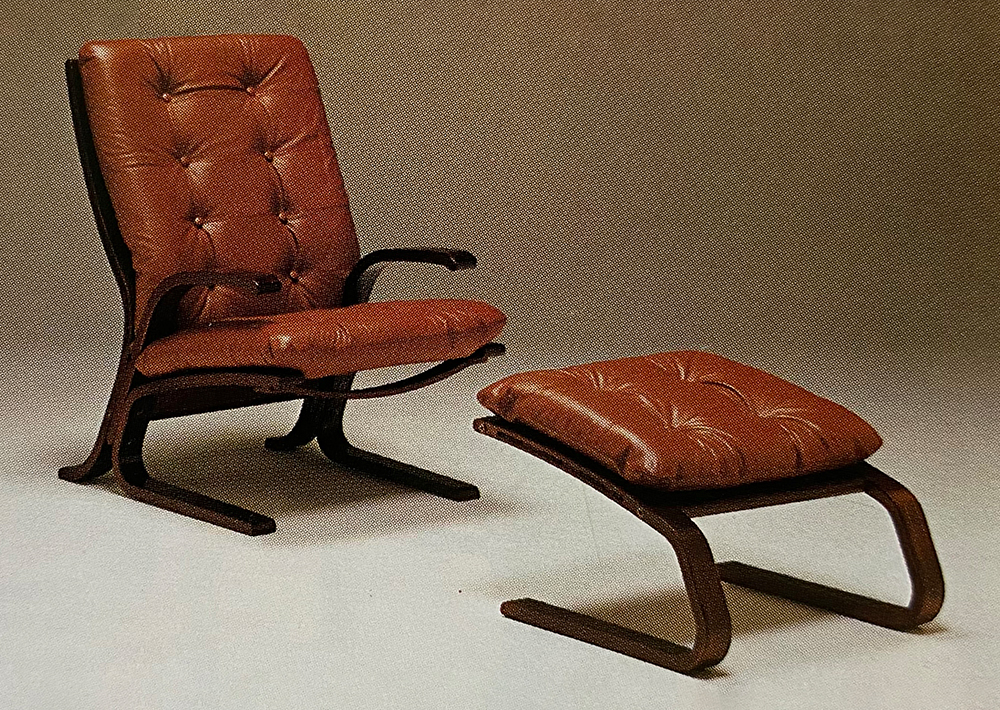
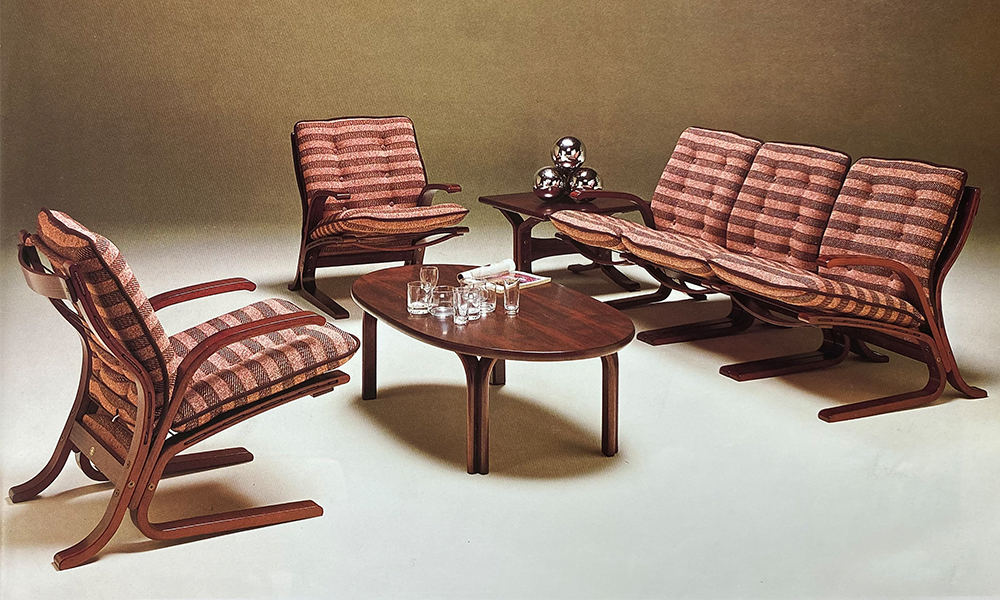
Rosetta quickly gained popularity after its release, and Fuji Furniture continued to develop molded plywood across various products. One year after Rosetta’s launch, the second model, “Memory,” was released in 1979, marking the completion of the prototype for today’s AGIO.
The evenly extended front and rear legs, the spindles on the backrest, and the button-tufted design that gives a soft impression—all of these elements were carried over into AGIO.
Since Rosetta had short rear legs, adding a backrest angle required making sharp curves in the frame. In contrast, Memory had long rear legs, and the front and rear legs were joined vertically, making it easier to add a backrest angle and resulting in smoother, more elegant curves in the frame.
Unlike Rosetta, Memory used special rubber sheets as the elastic material. Although this eliminated the labor of threading nylon ropes, several issues arose, such as limitations on the sofa’s size and the discontinuation of the rubber sheets by the manufacturer.
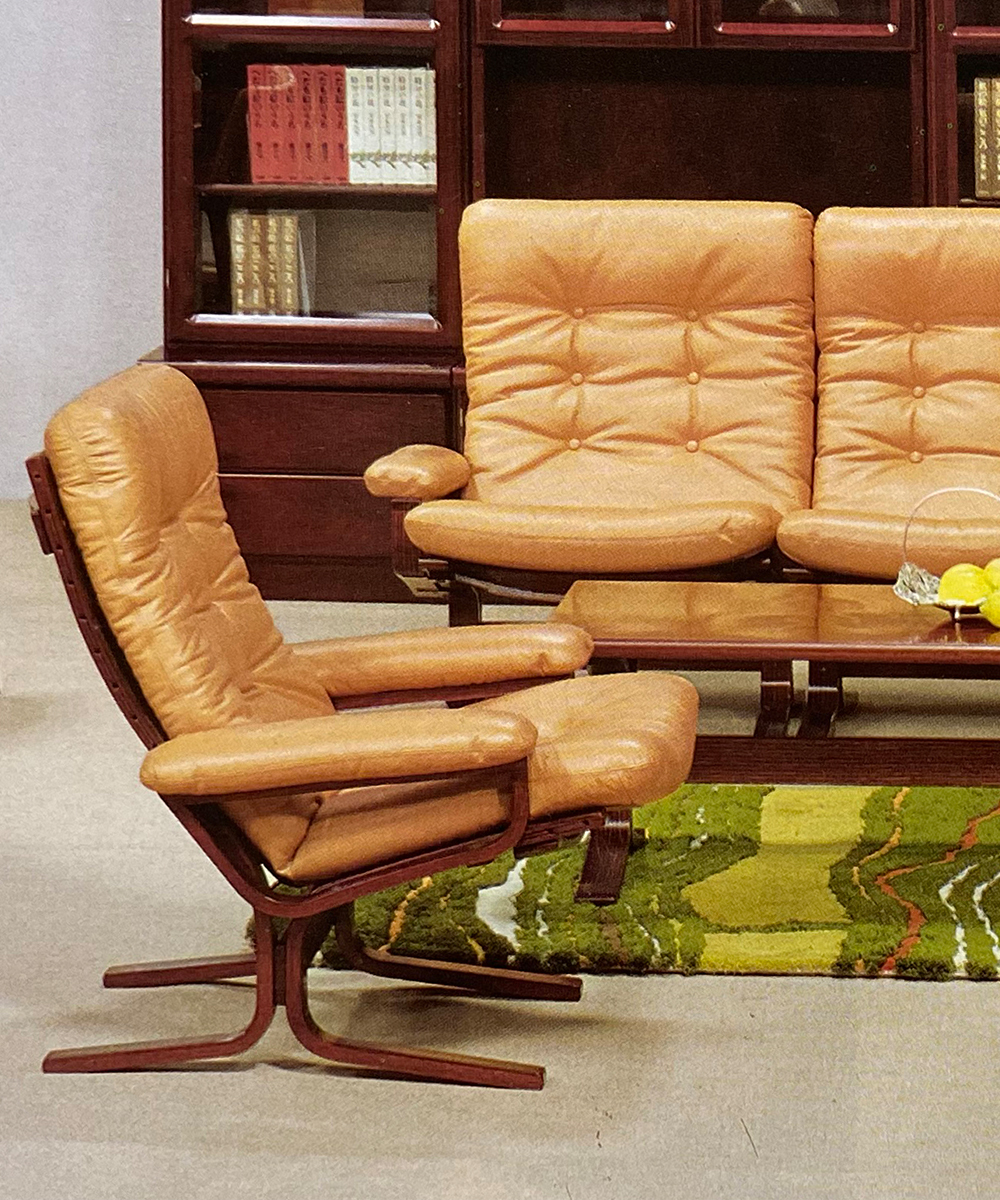
Rosetta quickly gained popularity after its release, and Fuji Furniture continued to develop molded plywood across various products. One year after Rosetta’s launch, the second model, “Memory,” was released in 1979, marking the completion of the prototype for today’s AGIO.
The evenly extended front and rear legs, the spindles on the backrest, and the button-tufted design that gives a soft impression—all of these elements were carried over into AGIO.
Since Rosetta had short rear legs, adding a backrest angle required making sharp curves in the frame. In contrast, Memory had long rear legs, and the front and rear legs were joined vertically, making it easier to add a backrest angle and resulting in smoother, more elegant curves in the frame.
Unlike Rosetta, Memory used special rubber sheets as the elastic material. Although this eliminated the labor of threading nylon ropes, several issues arose, such as limitations on the sofa’s size and the discontinuation of the rubber sheets by the manufacturer.
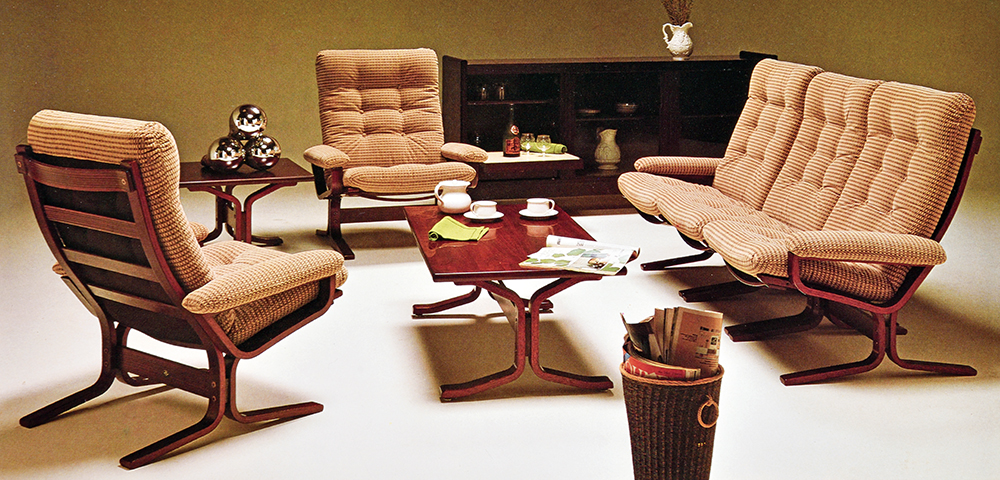
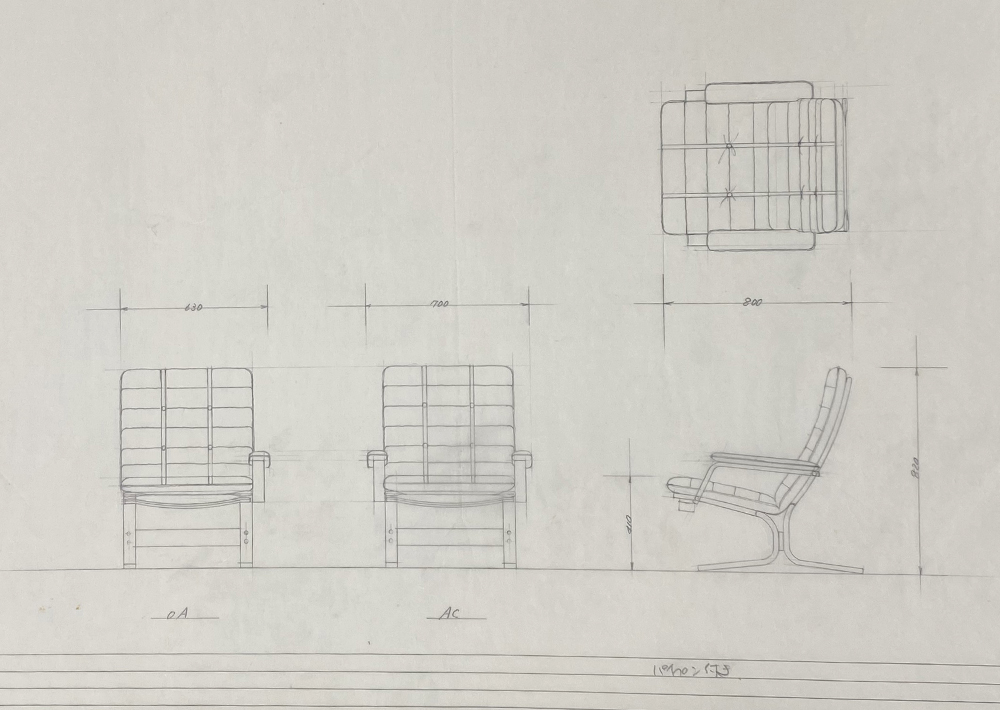
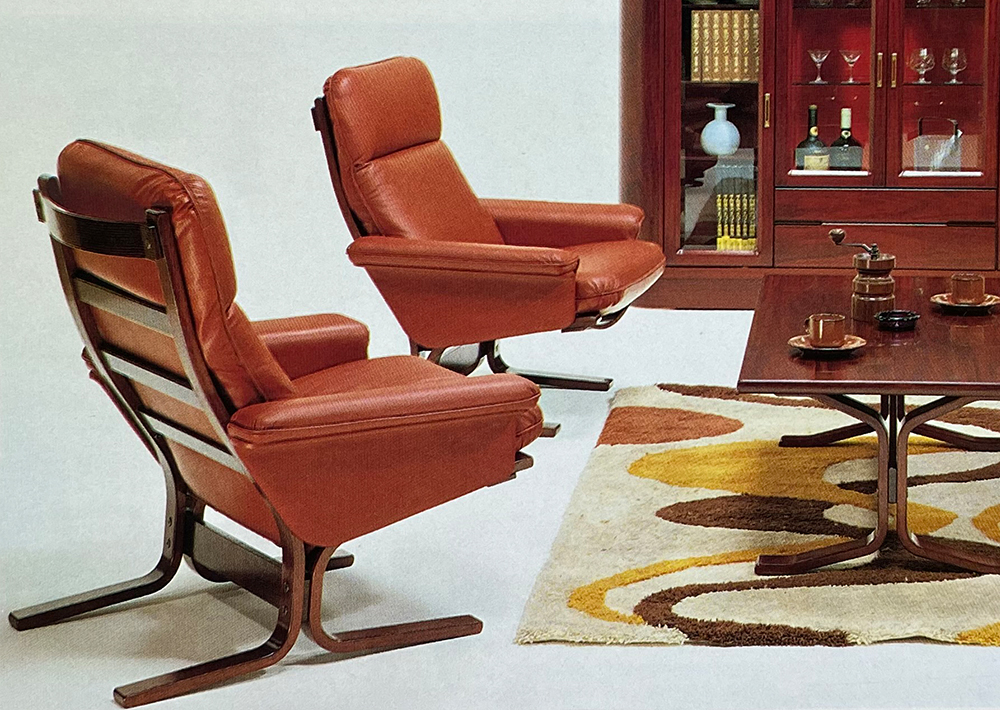
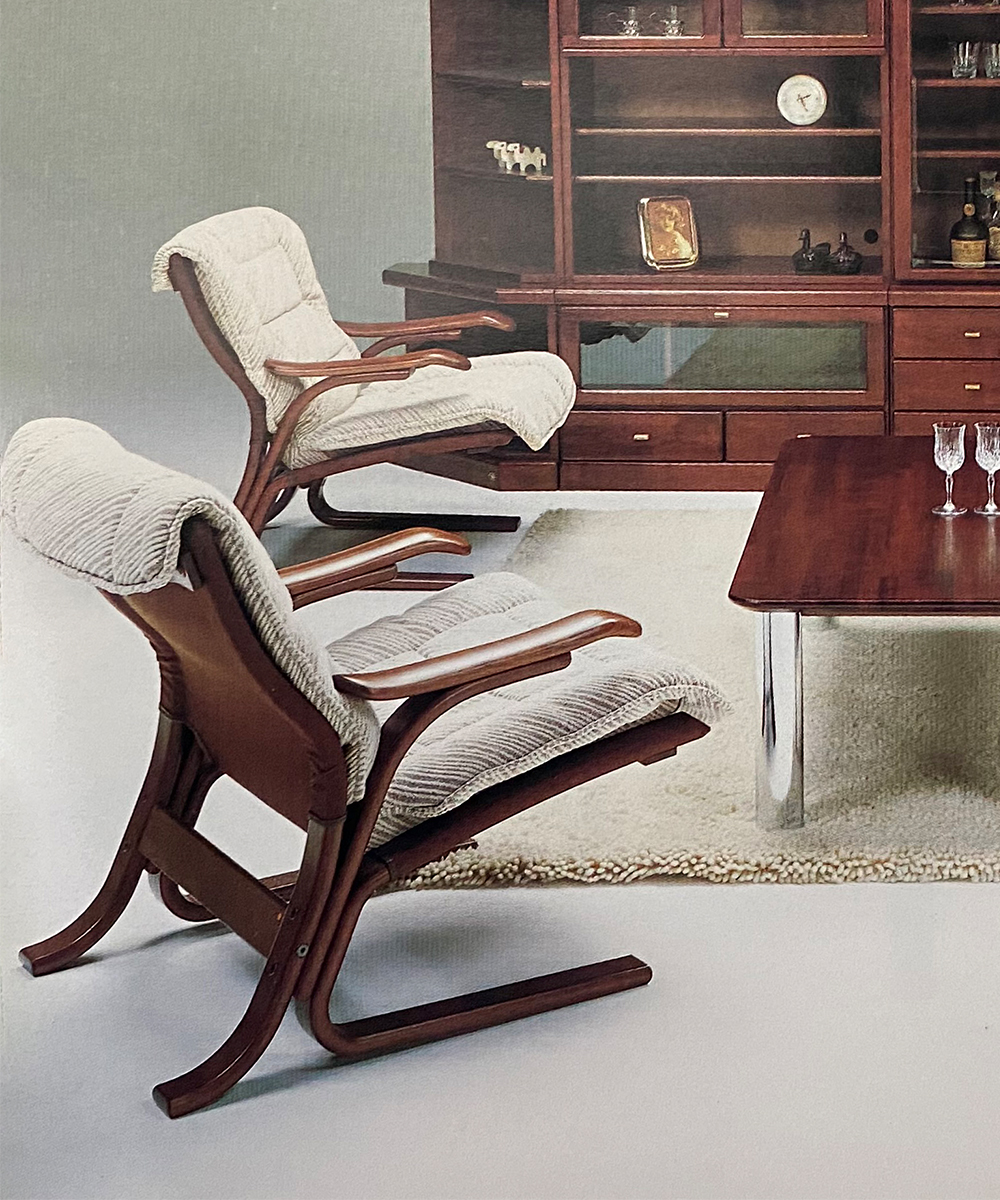
Several successor models to Rosetta and Memory were introduced, but they gradually declined in popularity with the arrival of the economic bubble. Sofas that matched the formal, impressive atmosphere of reception rooms became a hit, and reclining functions were increasingly in demand for personal sofas.
Sofas featuring molded plywood frames with designs different from Rosetta and Memory gained popularity, and many reclining chairs were developed as well. As a result, the number of products featuring the frame designs of Rosetta and Memory gradually decreased.
With the development of the final model numbered L3160, the Rosetta style was discontinued, and the designs were consolidated into the Memory style. Despite various efforts, such as using canvas for elasticity, developing low-back models, and adopting beech wood for a smoother paint finish, sales did not perform as expected during this period.
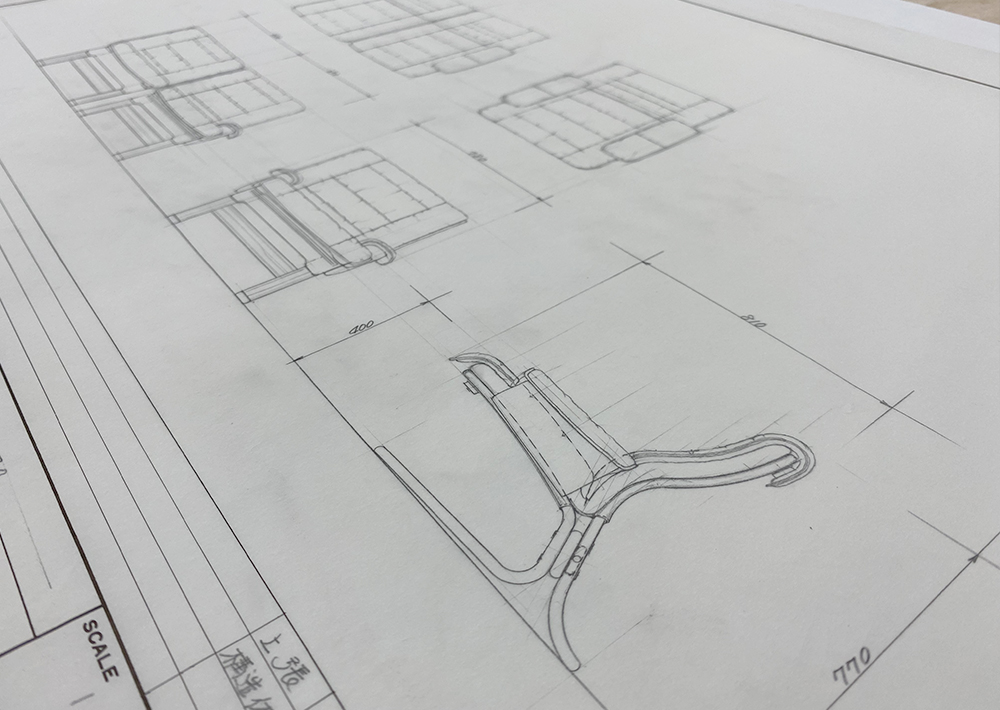
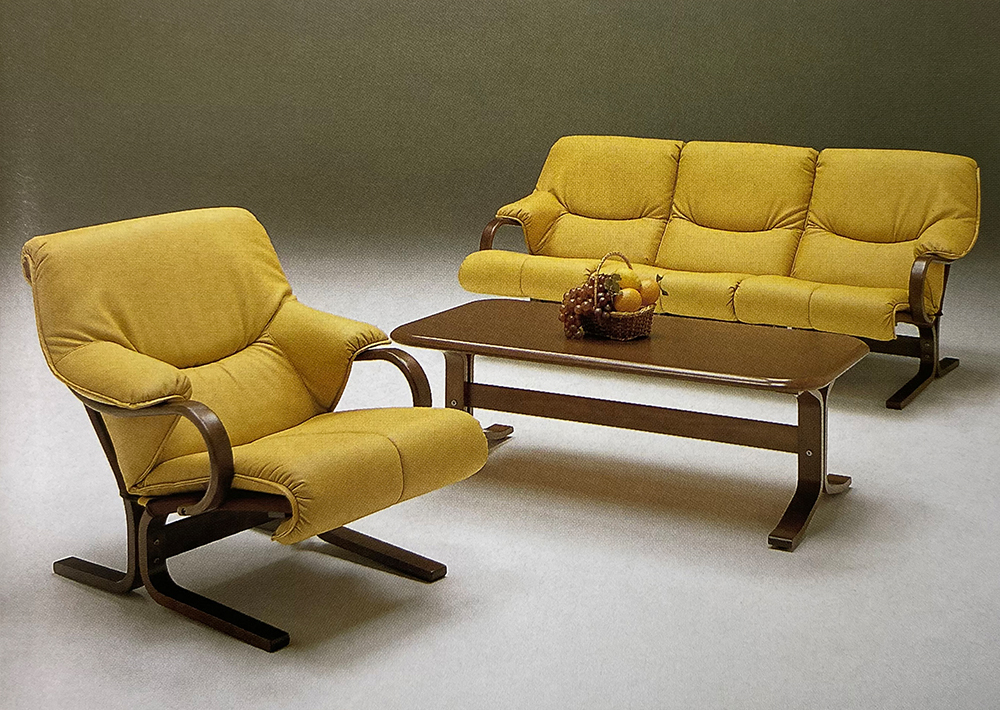
The turning point came with the development of the L07290. The frame was re-evaluated, and by significantly altering the curve of the legs, a more refined design was achieved. Additionally, the seating angle was adjusted, providing a deeper, more comfortable sitting experience even in a compact depth. To better meet customer preferences, wide-size options and reclining chairs were added to the lineup.
With improvements in design, comfort, and product variety, the L07290 gained such popularity that it continues to be in demand by many customers. Between 2004 and 2007, 11 derivative items were introduced, marking a period of growth. During this time, the development of the L07950 further refined the sofa’s design, accelerating its popularity.
Released in 2008, the L07950 focused on enhancing the design and comfort of the L07290. Although the changes may not have seemed significant at first glance, the back, previously covered with canvas, was redesigned with exposed spindles to showcase the upholstery. As more homes began to adopt “LD spaces,” where the living and dining areas are combined, the design shifted to ensure the sofa looked beautiful from the back as well. In terms of comfort, the elastic material was upgraded from canvas to the lighter and stronger Diametrol, which provides better body support for a more comfortable experience.
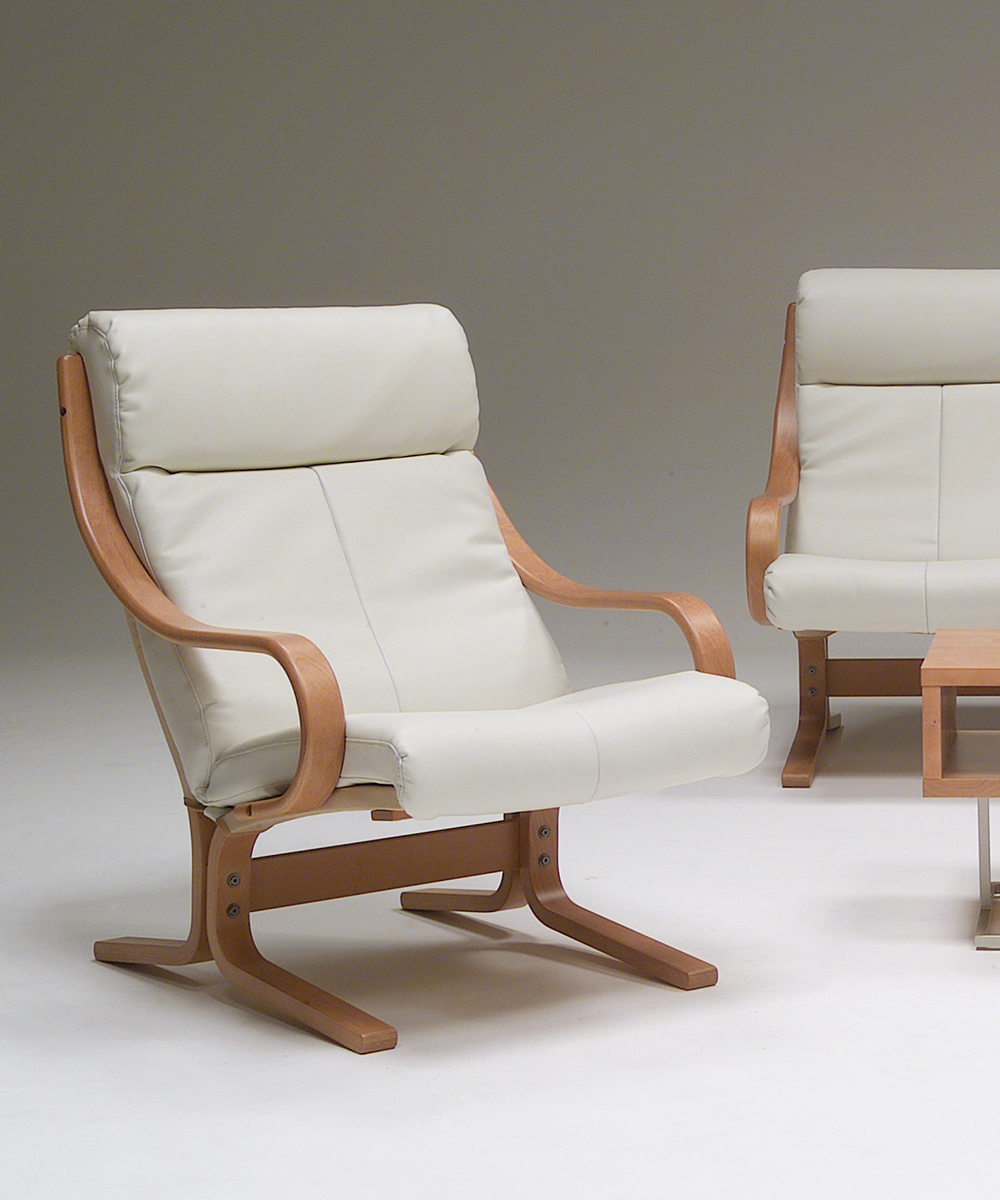
The turning point came with the development of the L07290. The frame was re-evaluated, and by significantly altering the curve of the legs, a more refined design was achieved. Additionally, the seating angle was adjusted, providing a deeper, more comfortable sitting experience even in a compact depth. To better meet customer preferences, wide-size options and reclining chairs were added to the lineup.
With improvements in design, comfort, and product variety, the L07290 gained such popularity that it continues to be in demand by many customers. Between 2004 and 2007, 11 derivative items were introduced, marking a period of growth. During this time, the development of the L07950 further refined the sofa’s design, accelerating its popularity.
Released in 2008, the L07950 focused on enhancing the design and comfort of the L07290. Although the changes may not have seemed significant at first glance, the back, previously covered with canvas, was redesigned with exposed spindles to showcase the upholstery. As more homes began to adopt “LD spaces,” where the living and dining areas are combined, the design shifted to ensure the sofa looked beautiful from the back as well. In terms of comfort, the elastic material was upgraded from canvas to the lighter and stronger Diametrol, which provides better body support for a more comfortable experience.
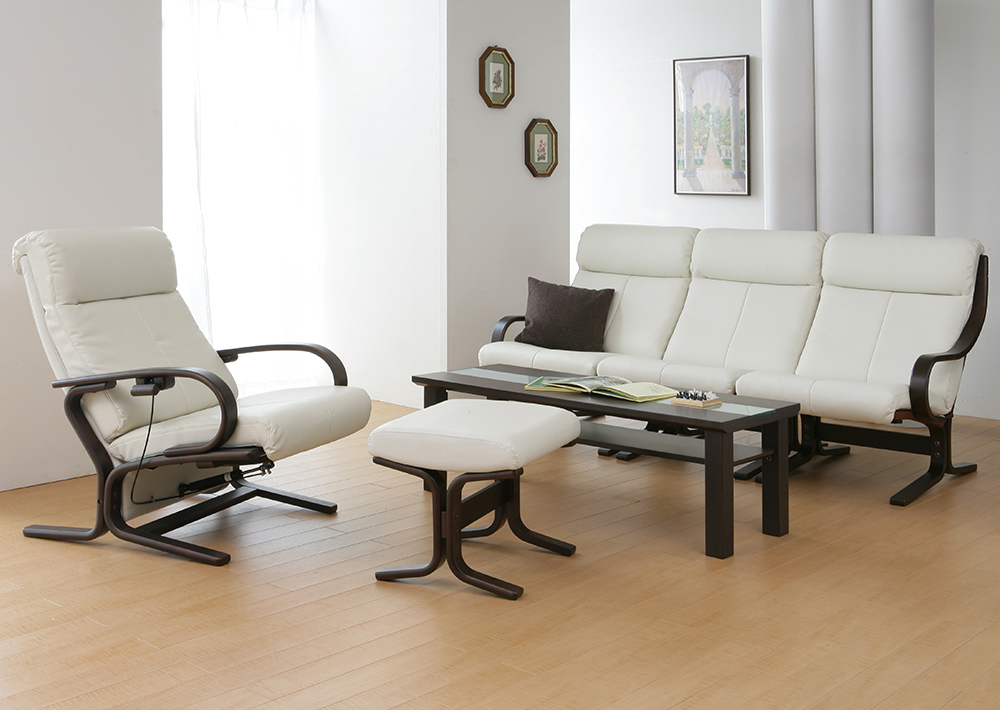

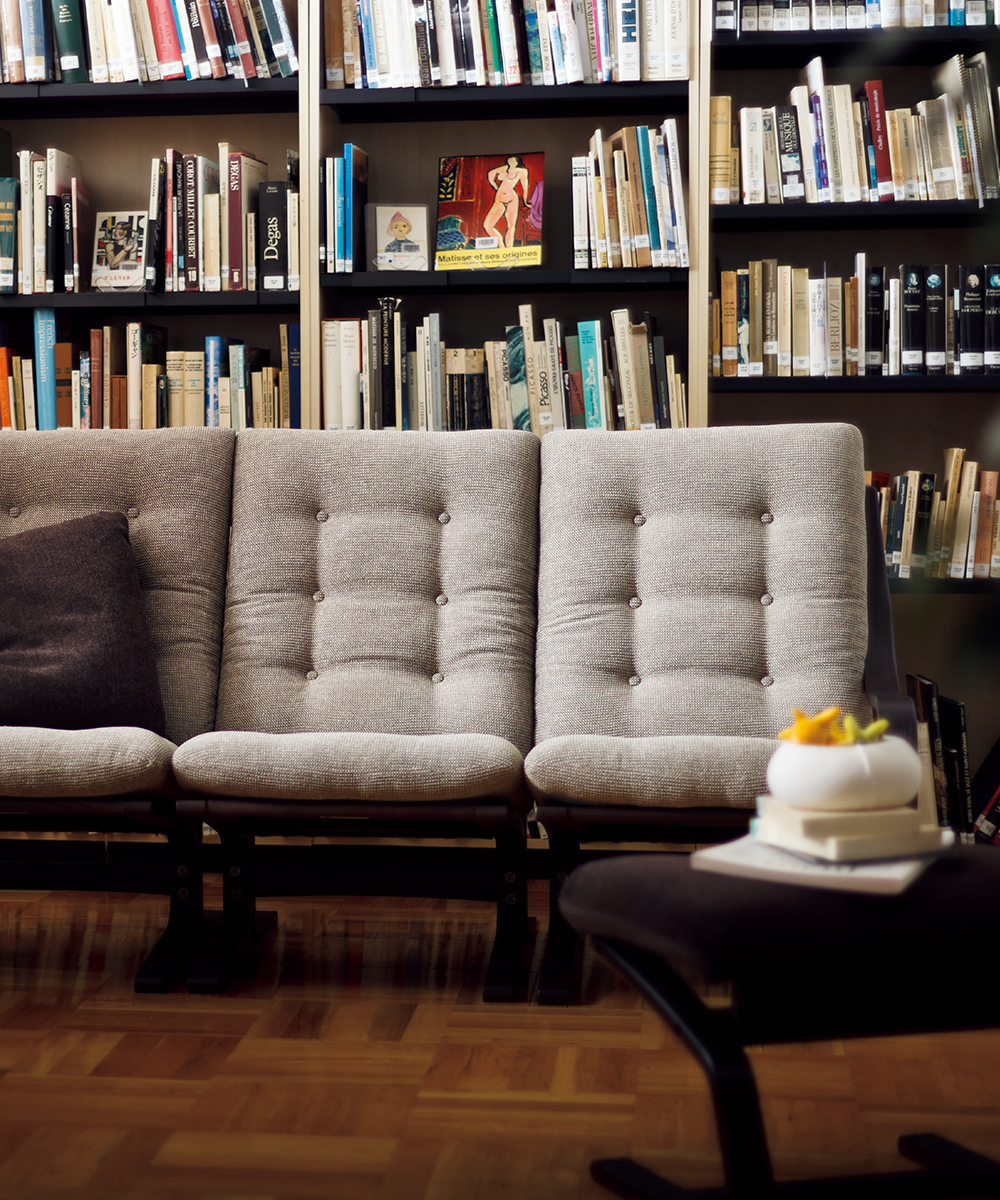
As the trend shifted toward a greater appreciation for authenticity, with increasing demand for better materials and textures, the current AGIO was born.
While maintaining the spindles on the back and the elastic material from the L07950, the cushion material and design were updated. Previously, two types of urethane with different levels of firmness were used for the cushions, but AGIO incorporates three types of urethane with varying firmness, and the seat cushion’s core is made from molded urethane. Molded urethane is a high-quality cushion material with excellent resilience and durability, and it is used in only about three other Fuji Furniture items. With the additional layers of urethane, AGIO now offers a more enveloping, comfortable sitting experience.
The cushion design reintroduces button tufting, which had not been used since 1983. Although the buttons used at that time lacked durability, the buttons used in AGIO have been improved to ensure greater longevity. The buttons give the sofa a softer feel and a touch of luxury.
To allow customers to create sofa configurations that suit their own spaces, wide-size options, low-back types, and reclining chairs were developed. With its comprehensive lineup, AGIO continues to receive high praise.

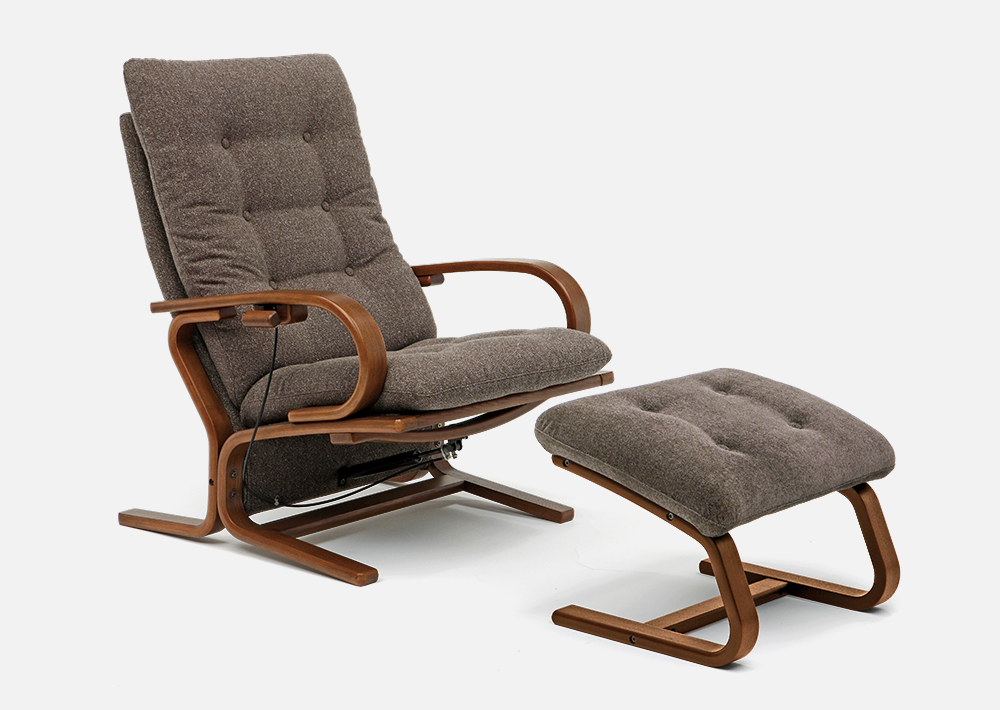
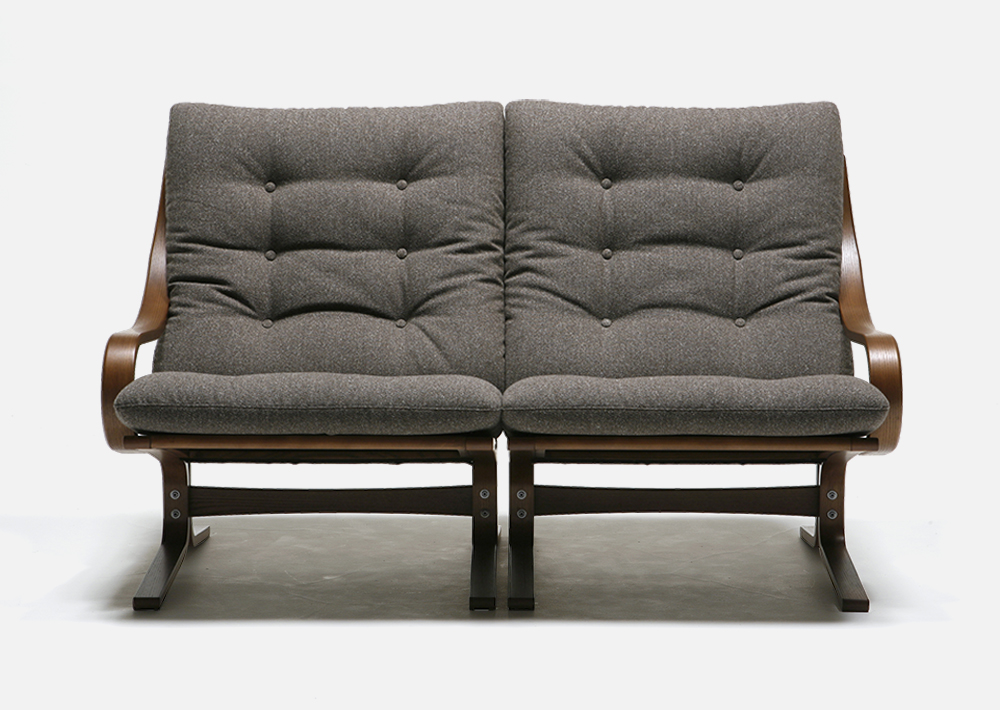
A new removable cover version of AGIO, which previously featured fixed upholstery, has been developed. The cushion covers are now removable, allowing our customers to maintain the covers themselves and easily replace them in case of wear or when redecorating.
While we create furniture that is built to last, we understand that over time, wear and tear is inevitable. Options like repairs or replacements are always available, but with AGIO’s removable cover feature, simply replacing the cover can give the sofa a new lease on life. This is the unique advantage of a removable cover design.
At Fuji Furniture, we believe it is our responsibility to contribute to the Sustainable Development Goals (SDGs), particularly Goal 12: “Responsible Consumption and Production.” By creating AGIO and offering a removable cover option, we are helping users contribute to the achievement of these global sustainability goals.
Over 40 years, AGIO has undergone numerous improvements and adapted to the change of the times. We hope we’ve been able to convey a sense of why AGIO has continued to be cherished so long. Perhaps in the near future, we will see another improvement or a successor to the beloved AGIO.

A new removable cover version of AGIO, which previously featured fixed upholstery, has been developed. The cushion covers are now removable, allowing our customers to maintain the covers themselves and easily replace them in case of wear or when redecorating.
While we create furniture that is built to last, we understand that over time, wear and tear is inevitable. Options like repairs or replacements are always available, but with AGIO’s removable cover feature, simply replacing the cover can give the sofa a new lease on life. This is the unique advantage of a removable cover design.
At Fuji Furniture, we believe it is our responsibility to contribute to the Sustainable Development Goals (SDGs), particularly Goal 12: “Responsible Consumption and Production.” By creating AGIO and offering a removable cover option, we are helping users contribute to the achievement of these global sustainability goals.
Over 40 years, AGIO has undergone numerous improvements and adapted to the change of the times. We hope we’ve been able to convey a sense of why AGIO has continued to be cherished so long. Perhaps in the near future, we will see another improvement or a successor to the beloved AGIO.
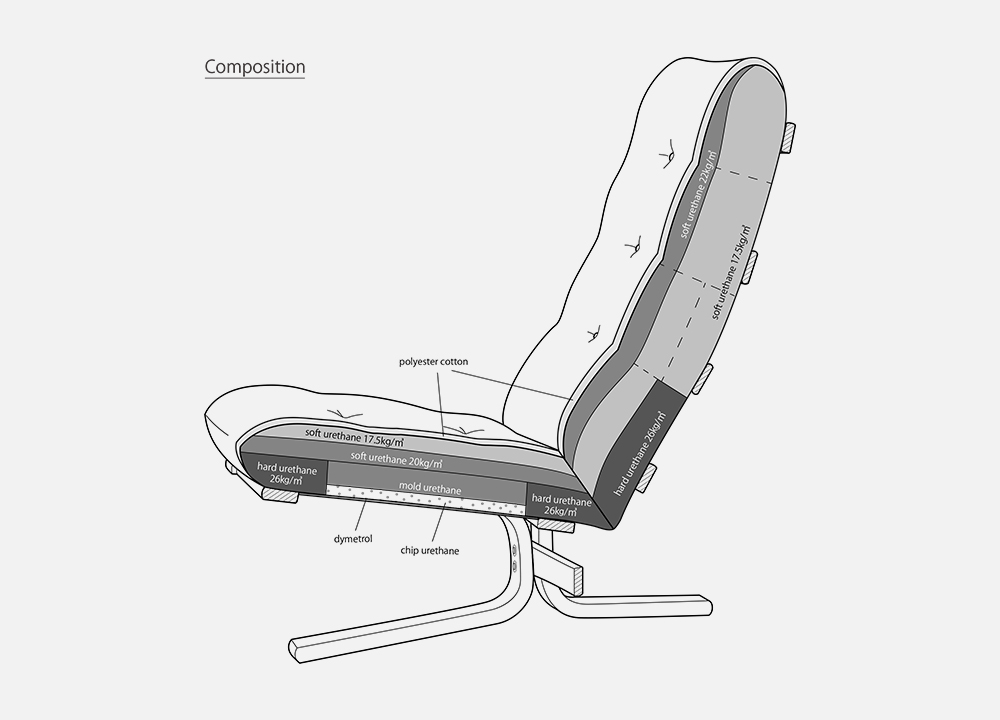
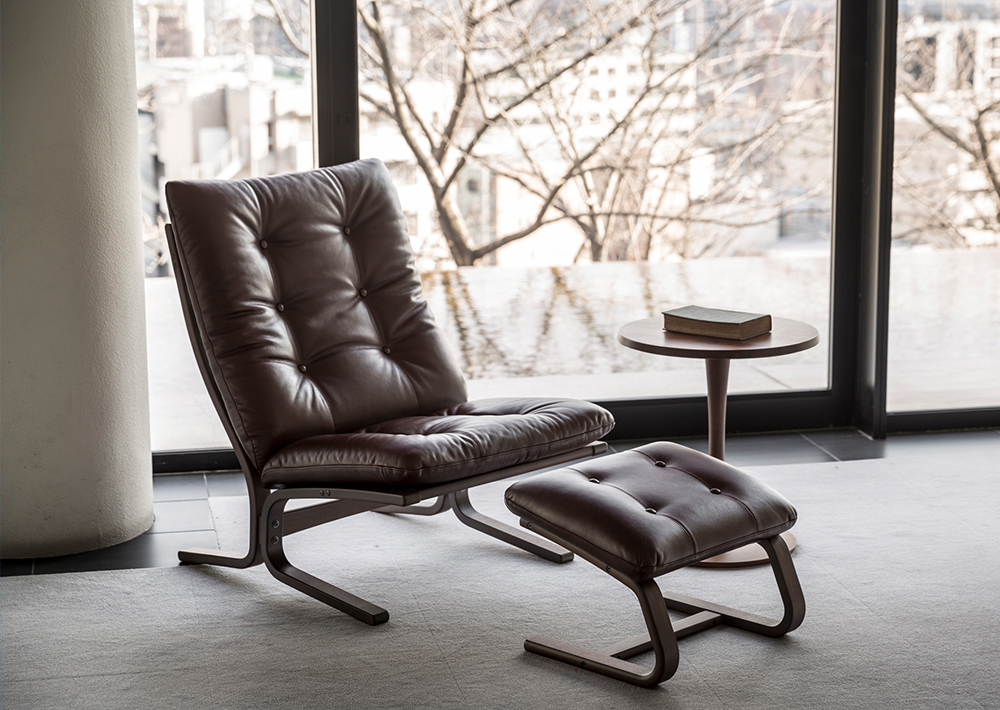
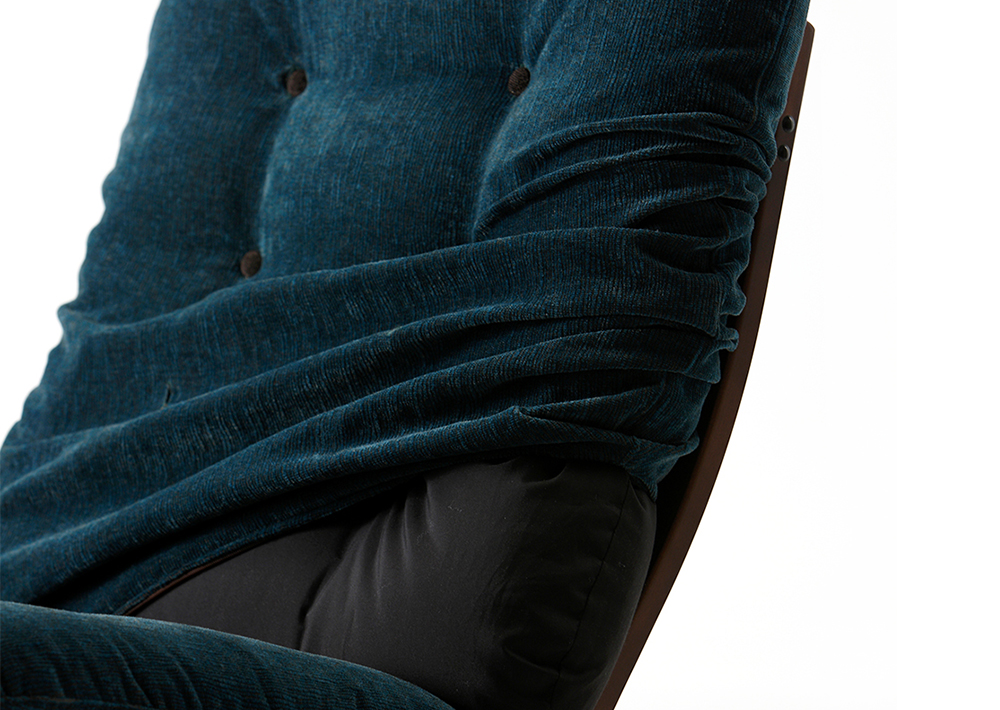
AGIO has many features, but one of its greatest appeals is that it is both a separable sofa and a lightweight sofa. Each seat can be detached, allowing you to combine two or three seats freely. Its lightweight design makes it easy to carry anywhere.
For example, “We usually use three seats in the living room, but today I want to use one in my personal room, so I’ll just take one seat,” or “We have four seats lined up, but let’s separate one to use as a personal sofa and leave the other three together.” This flexibility allows for a variety of uses.
The ability to adapt the sofa to the shape you need at any given moment—that’s the charm of the separable and “lightweight” sofa.
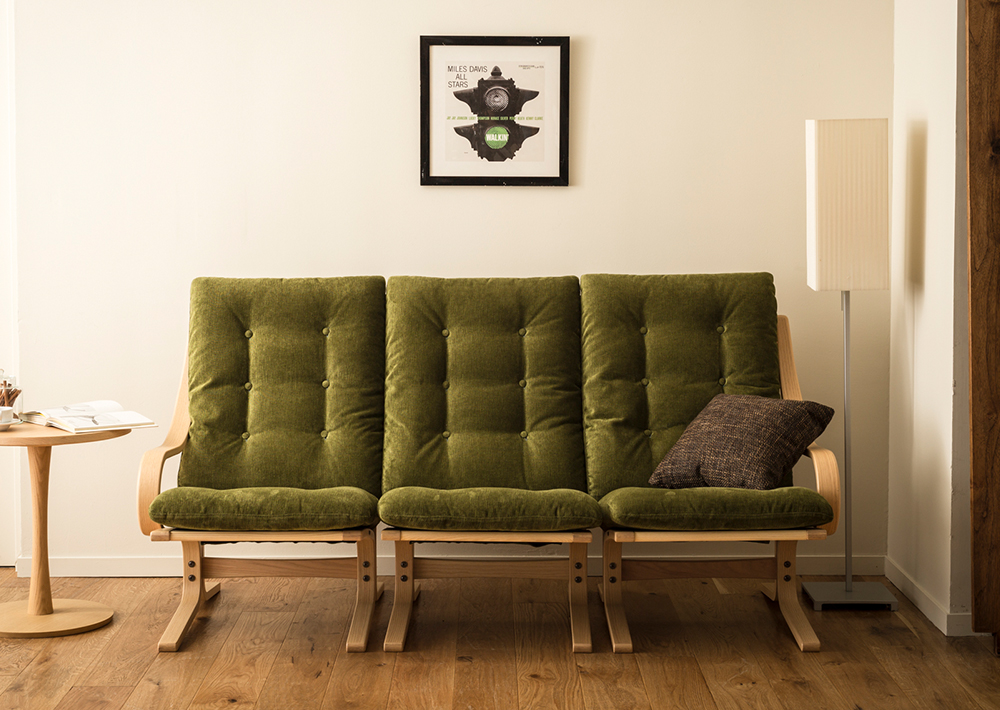
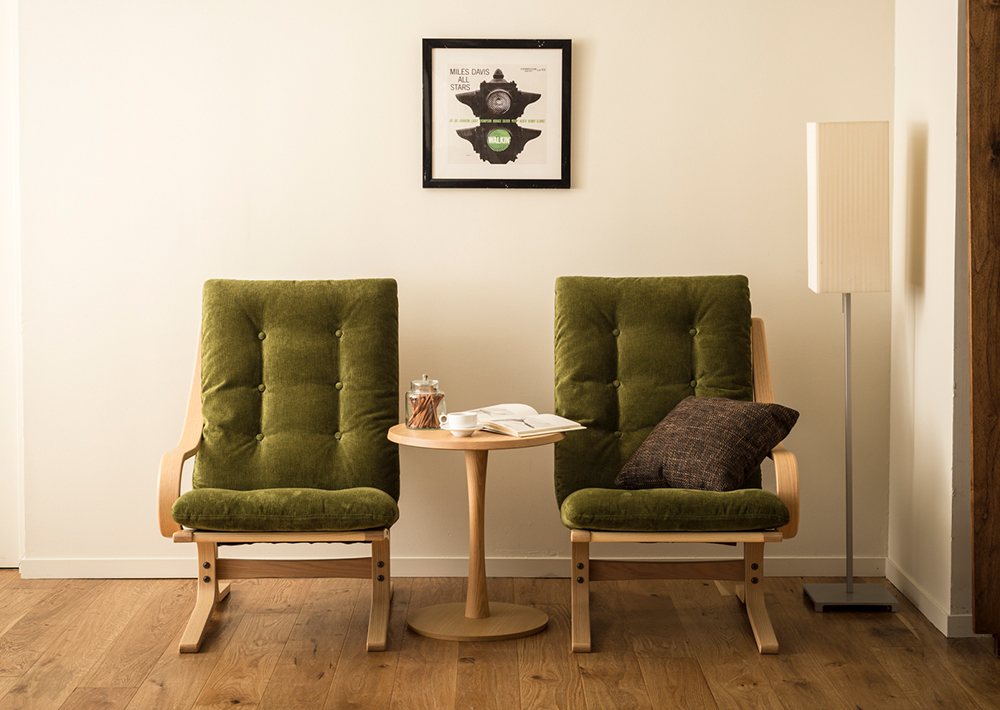

Not only does AGIO excel in design and cushioning as a sofa, but being a separable and lightweight sofa, we propose new scenes that blend “living” and “working.”
The unique feature of being able to transform into the shape you need right now—something not found in other sofas—may create spontaneous communication and bring a fresh dynamic to office spaces.
We invite you to experience AGIO’s seven styles, which are possible even in a compact space of 33 square meters.

Expansion and Freedom
Expansion and Freedom
The gently undulating wave (nami) layout seems to allow for just the right distance between people sitting next to each other, doesn’t it? Whether someone wants to take a break alone or share a conversation with another, the design offers flexibility. In a small room where dividing the space with walls isn’t possible, this layout invites people to comfortably enjoy their own actions in the way they choose. It’s easy to imagine such scenes unfolding.

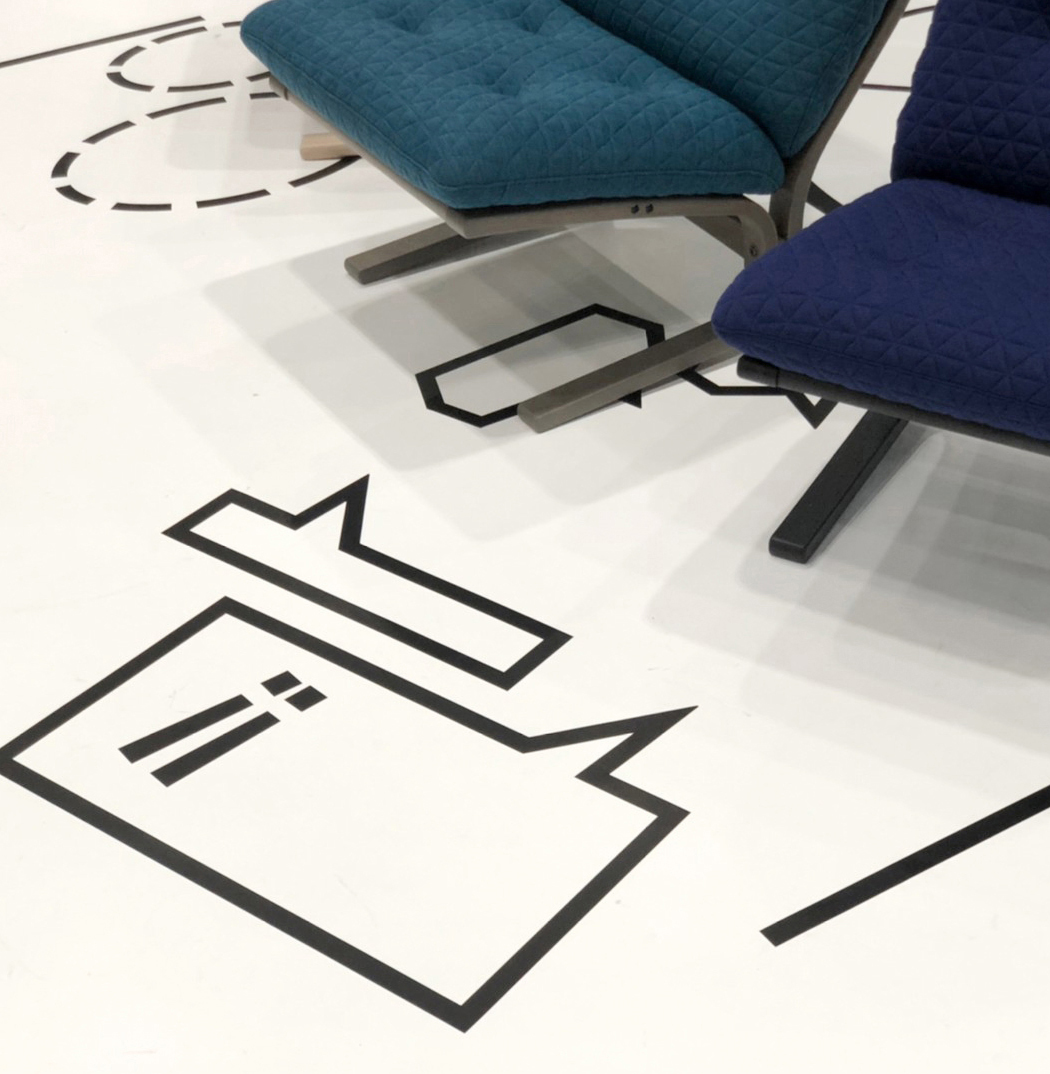
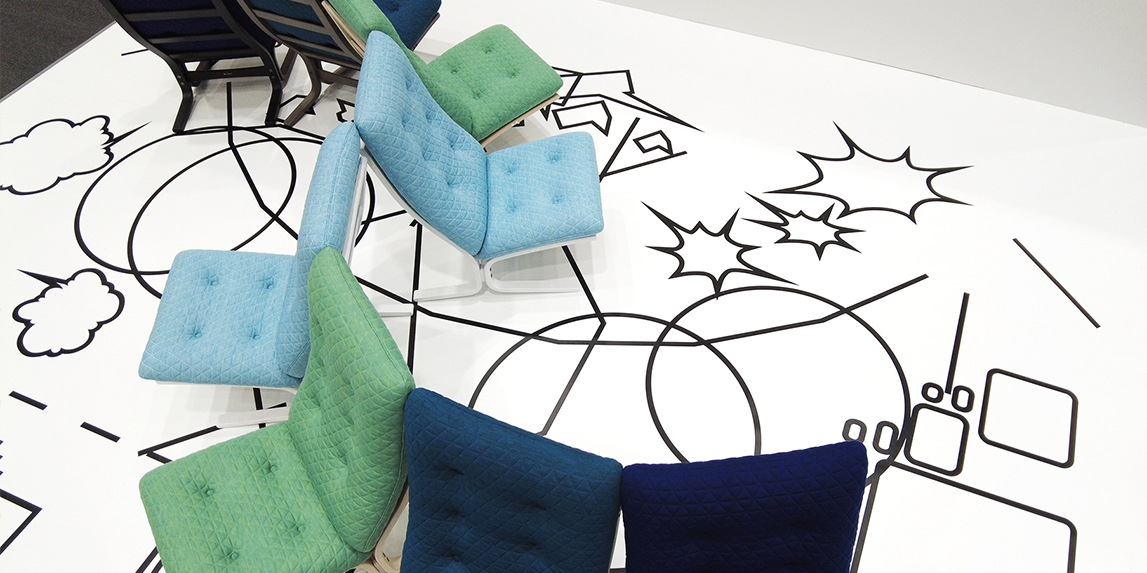
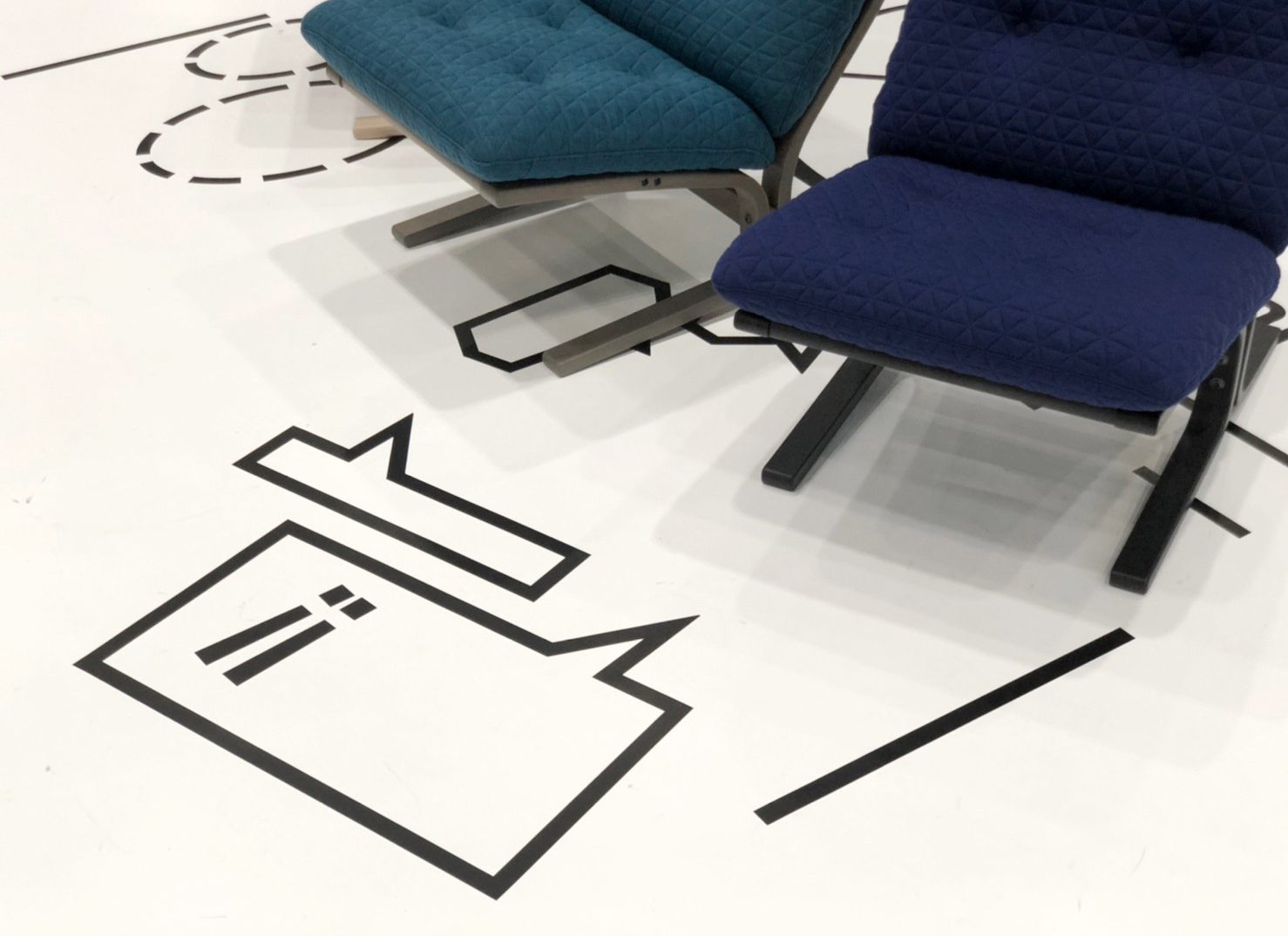
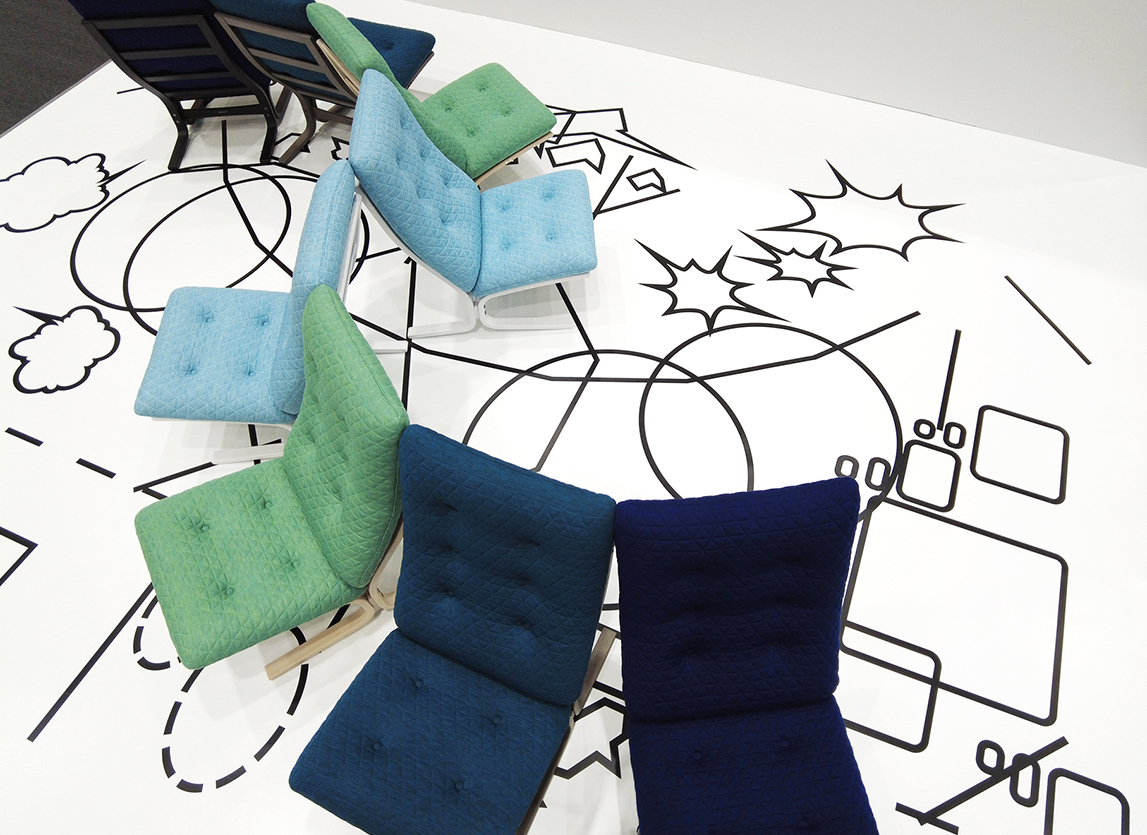

Time for Yourself, Time for the Team
Time for Yourself, Time for the Team
When arranged with the circle (en) facing outward, the person next to you is out of your line of sight, allowing for personal space. It’s a layout that provides solitude—a space to work alone, to focus deeply on your thoughts, or to take a quiet rest. Even without walls, it’s easy to imagine a scene where you can carve out time and space for yourself.
On the other hand, if the circle is arranged inward, you naturally face the person next to you. This creates an atmosphere for group discussions or collaborative work, allowing you to share time and tasks with others as a team
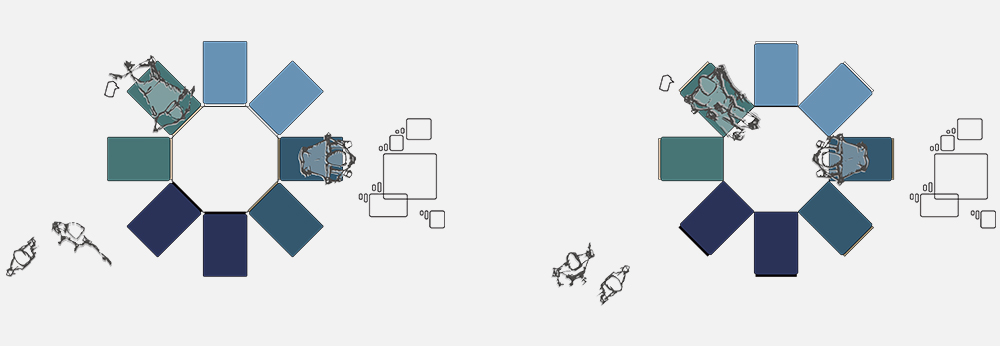
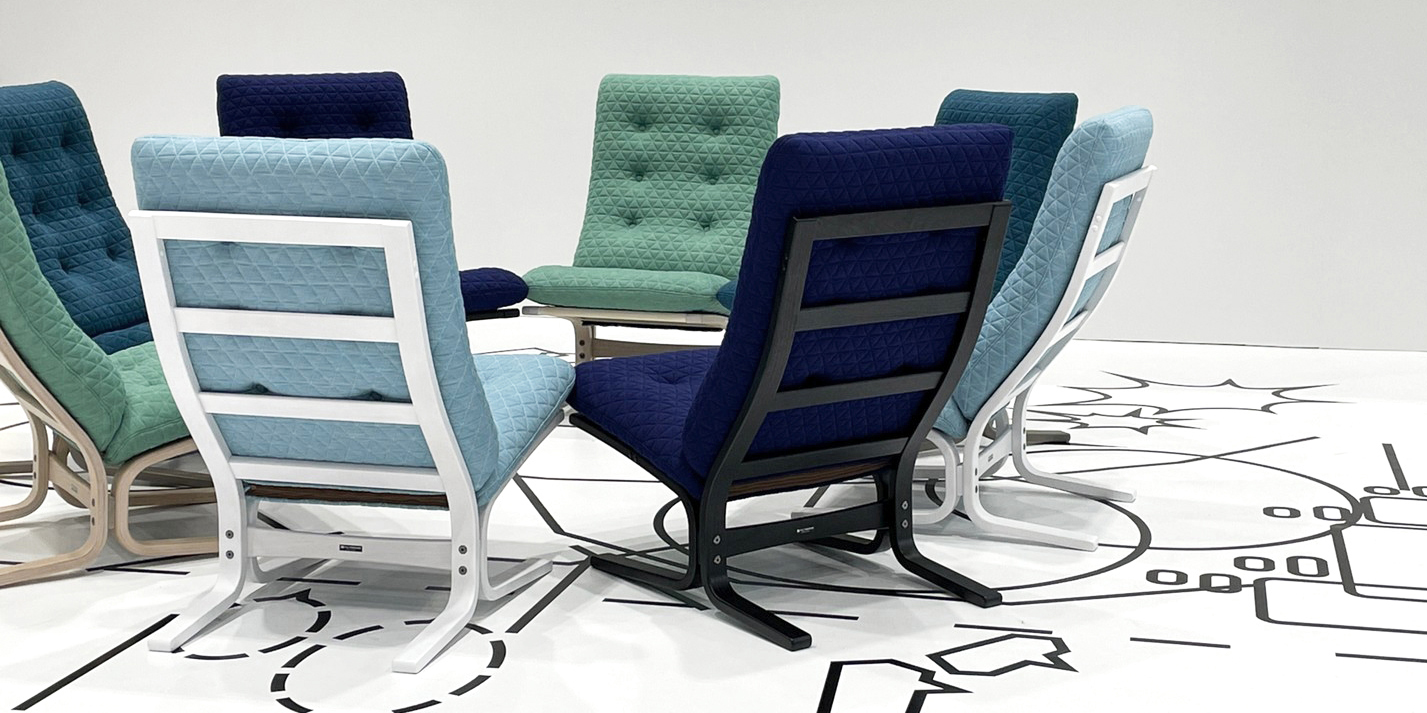
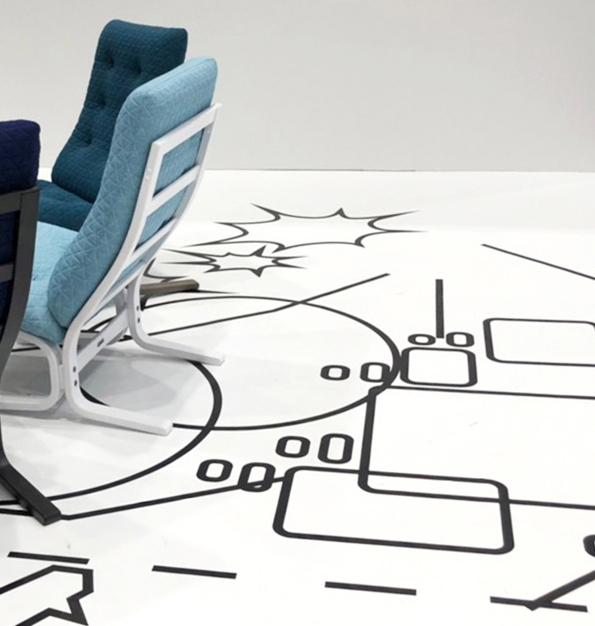
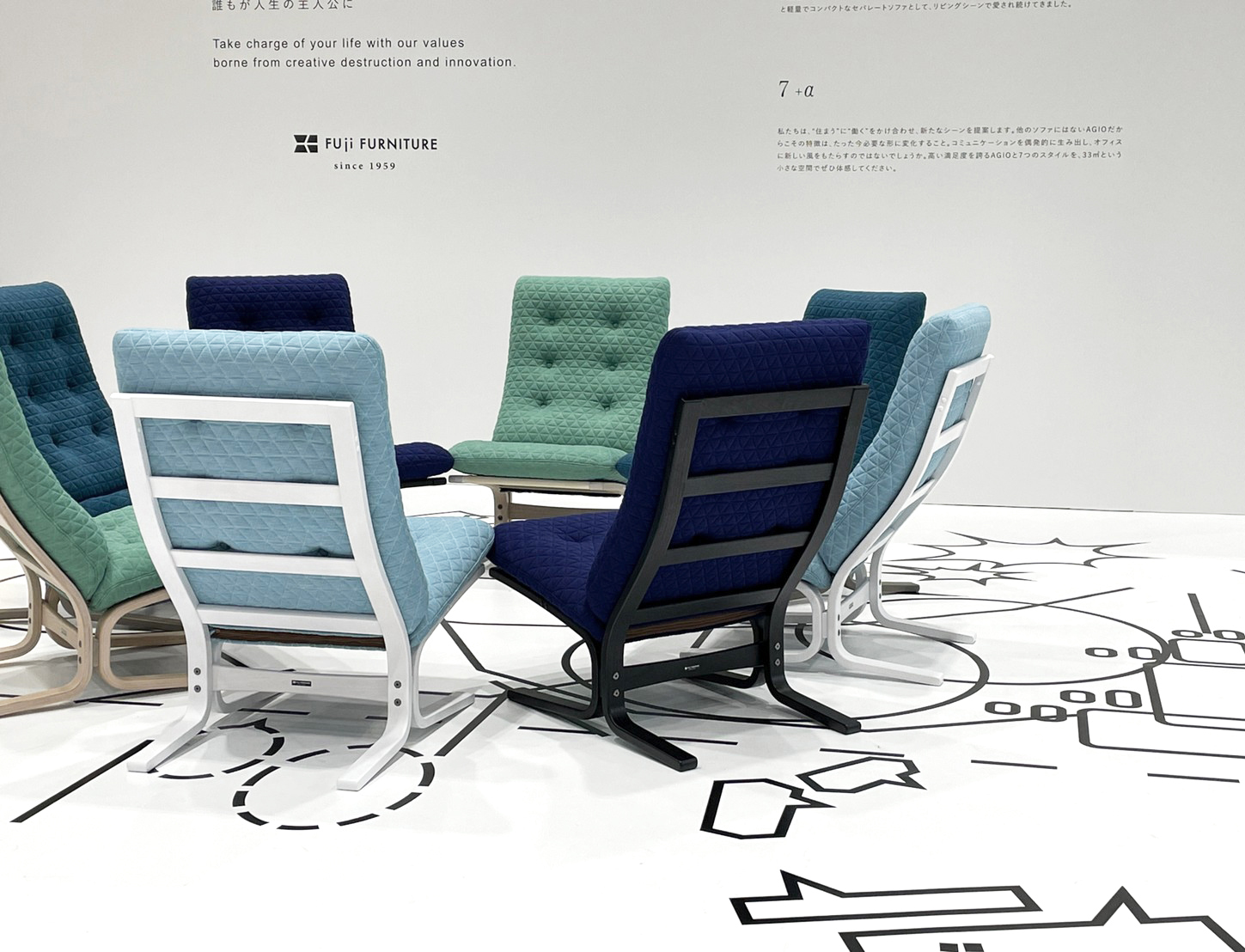
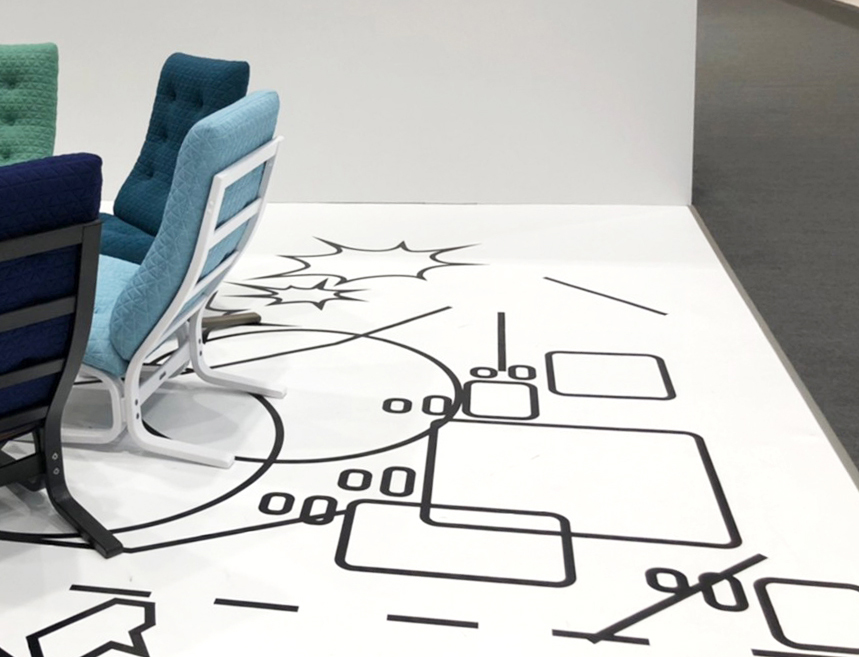

Attention and Focus
Attention and Focus
When arranged inward, the fan shape allows people to face each other, making it ideal for conversations or presentations where everyone’s attention converges on a speaker. On the other hand, when arranged outward, the angles create space between individuals, offering the opportunity for solitude and personal time. It’s easy to envision these different scenarios.
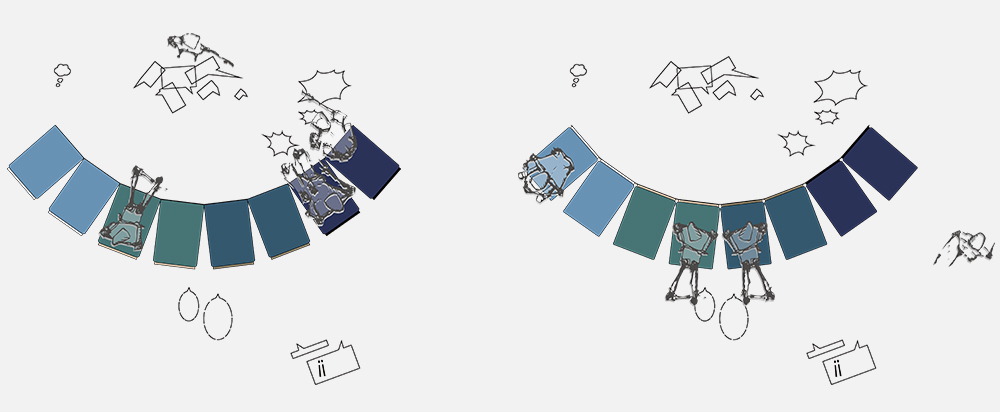
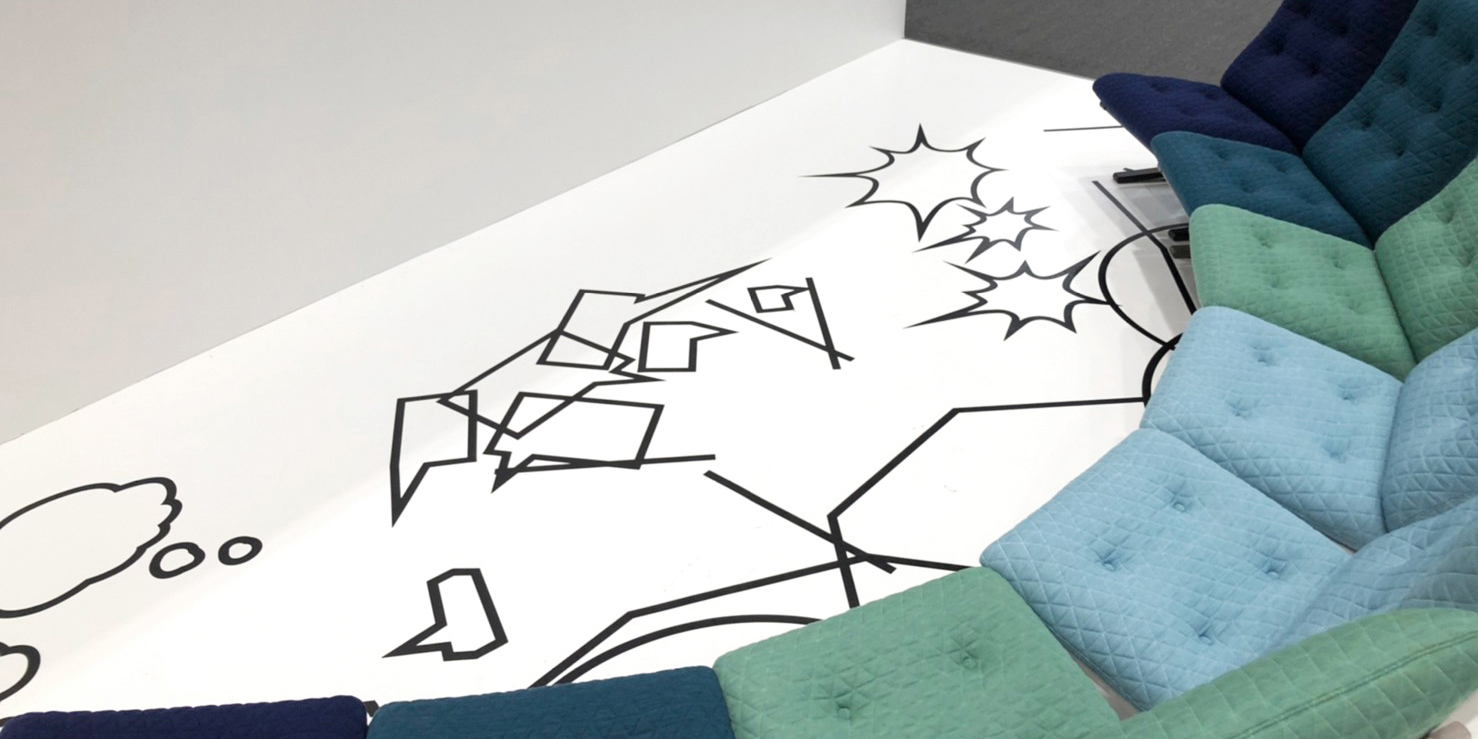
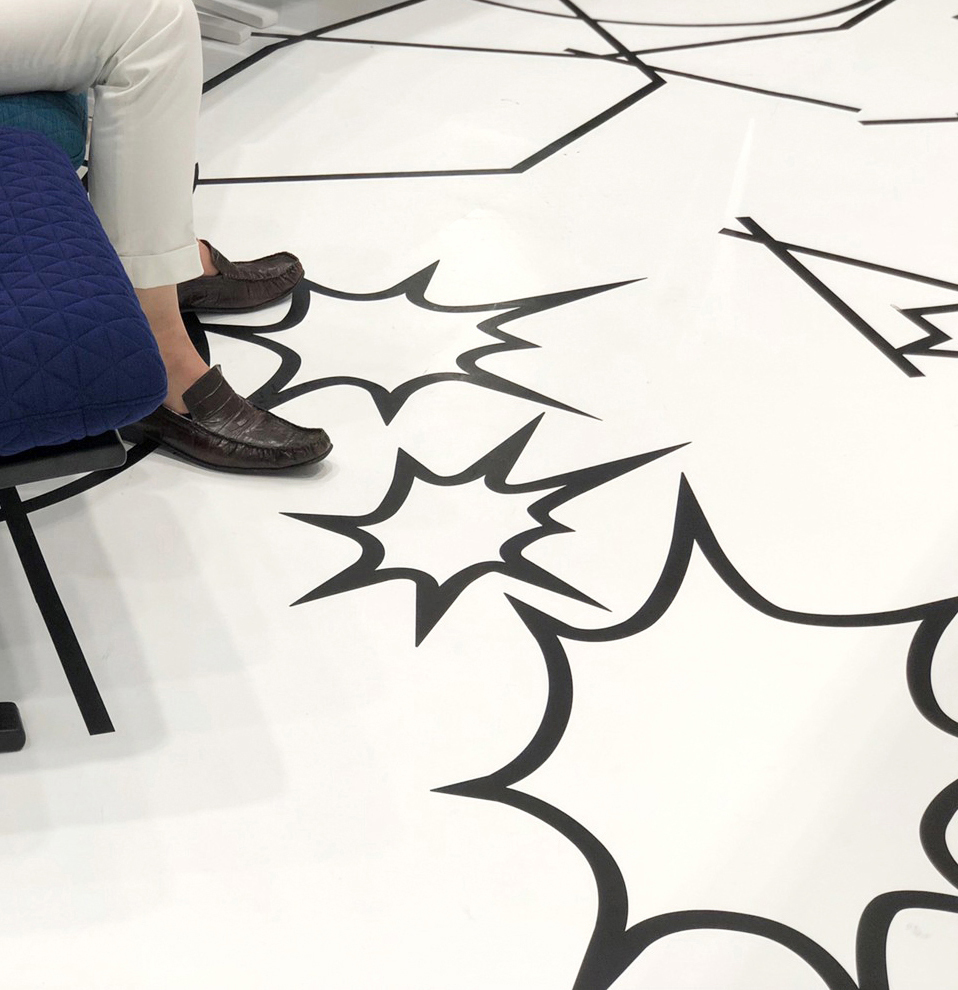
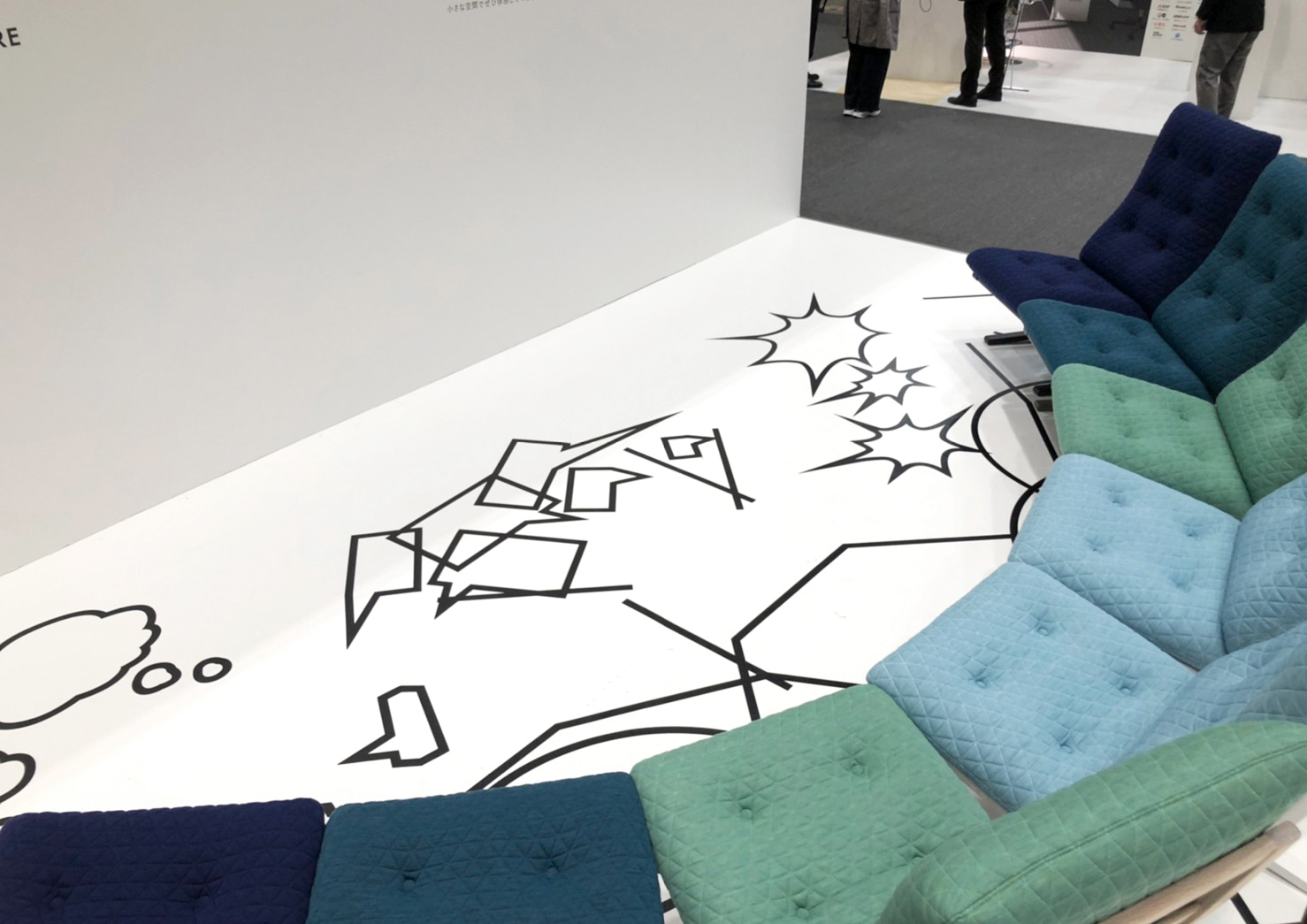
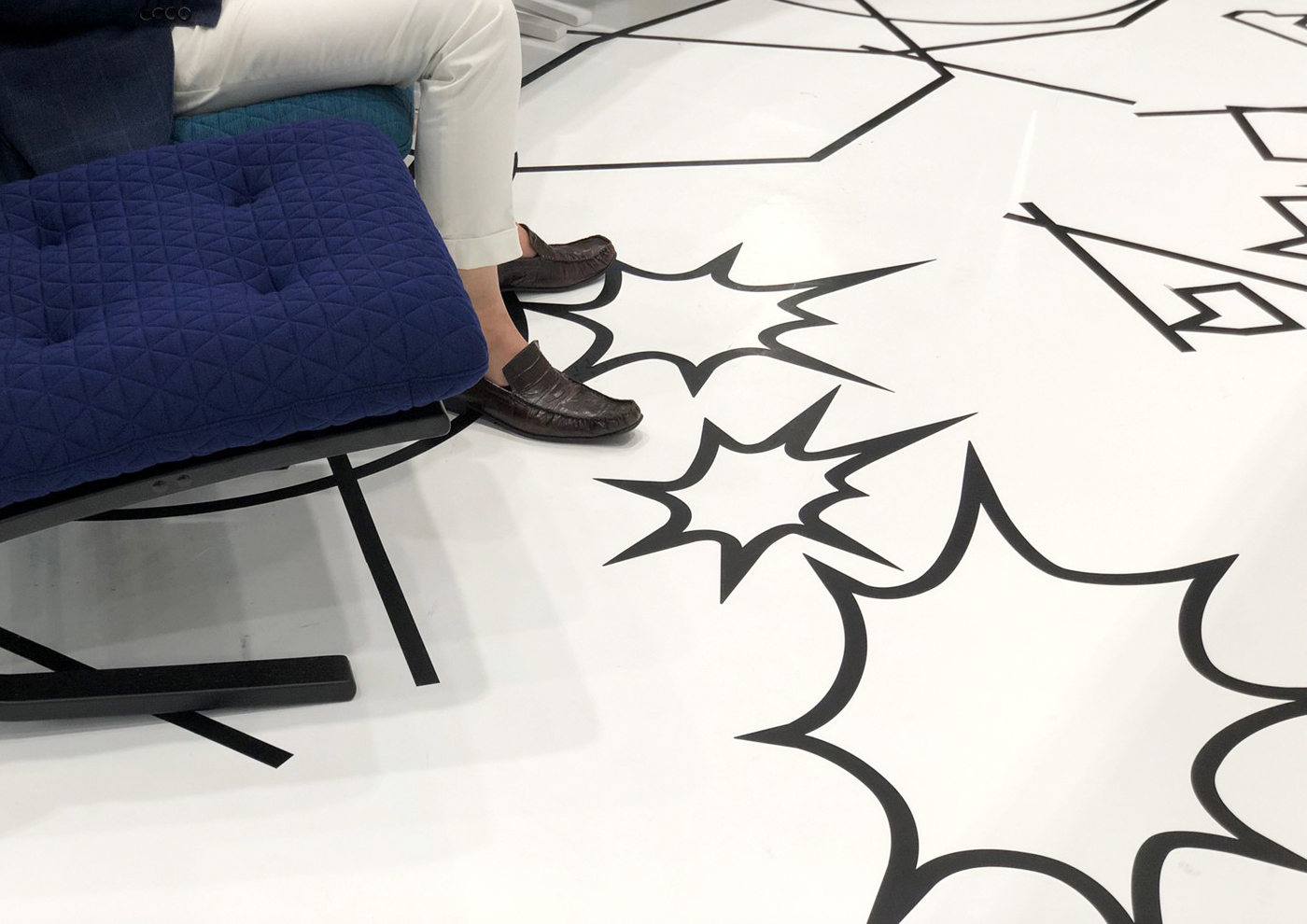

Connecting, Separating, Dividing
Connecting, Separating, Dividing
The most common sofa arrangement is in a straight line (sen). What makes AGIO unique is that it allows those seated to adjust the space between them as they please. In this linear setup, you can easily imagine a scene where one, two, or three people sit, creating their own comfortable areas by adjusting their proximity to one another.


Two People, One Space
Two People, One Space
Even in a small room, the compact size of the sofa allows you to arrange it in a checkered pattern (ichimatsu), dividing the space into four distinct areas. Whether you want to have a calm conversation with a partner, discuss a topic in depth, or accommodate an unexpected guest with ease, this layout provides flexibility. When seated directly opposite each other, tension can arise from being too aware of the other’s expressions, but by slightly offsetting the arrangement, it creates a more relaxed atmosphere where thoughts and opinions can flow naturally.
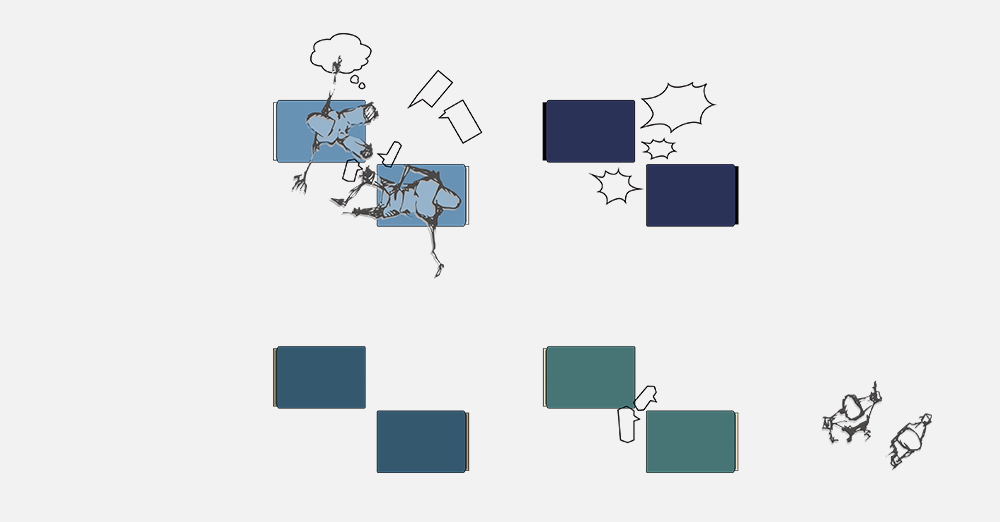
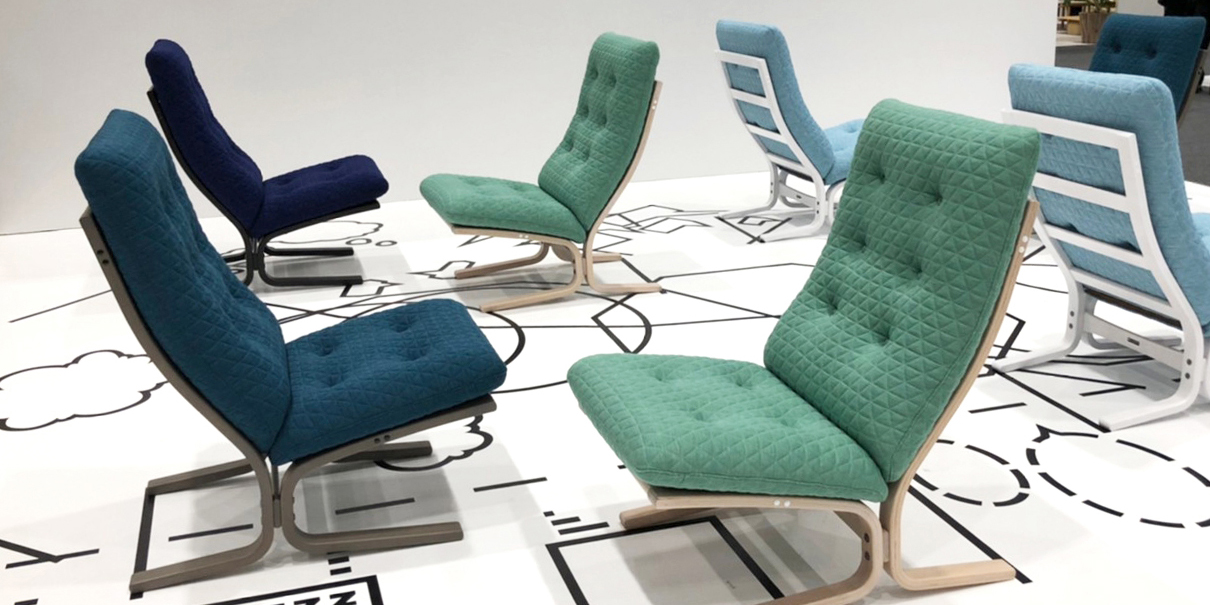
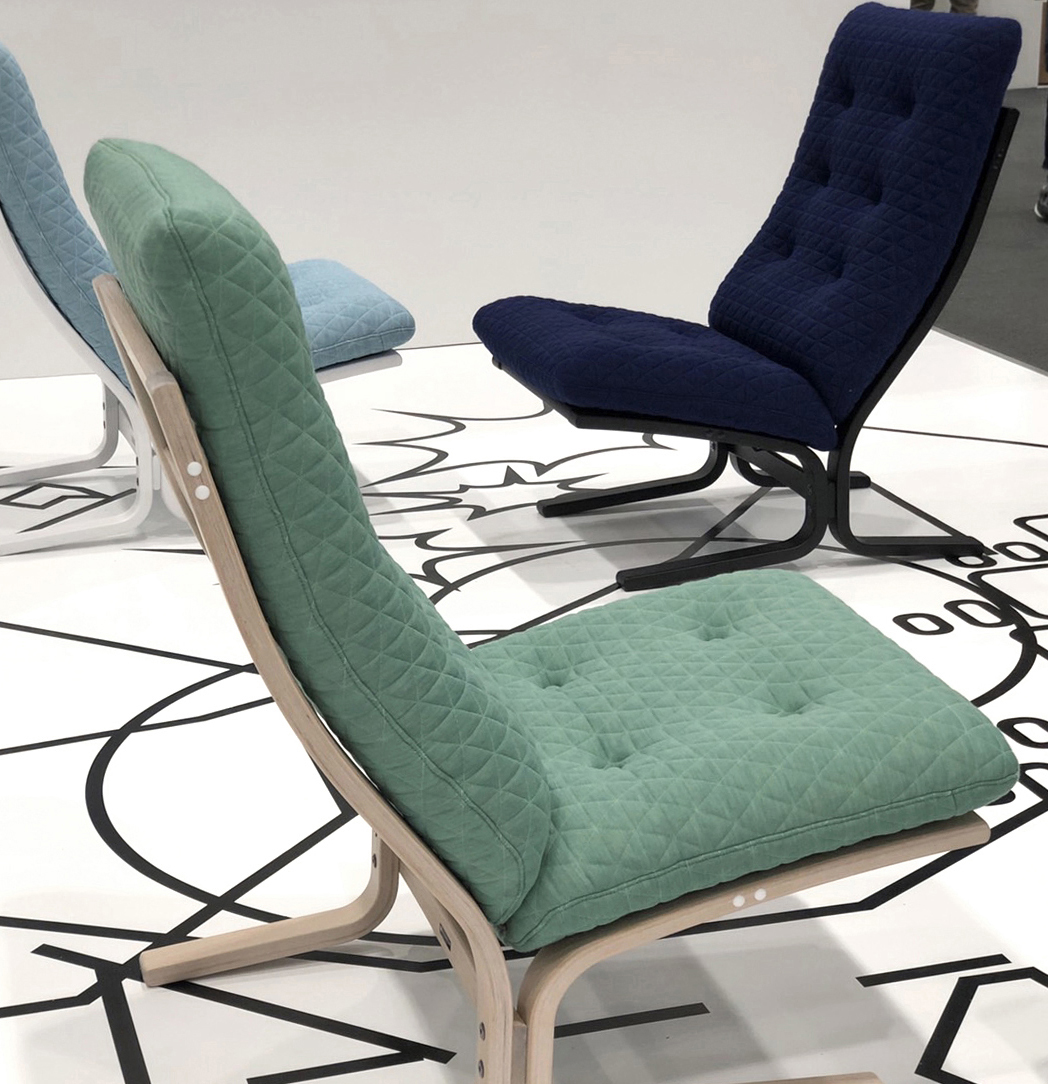

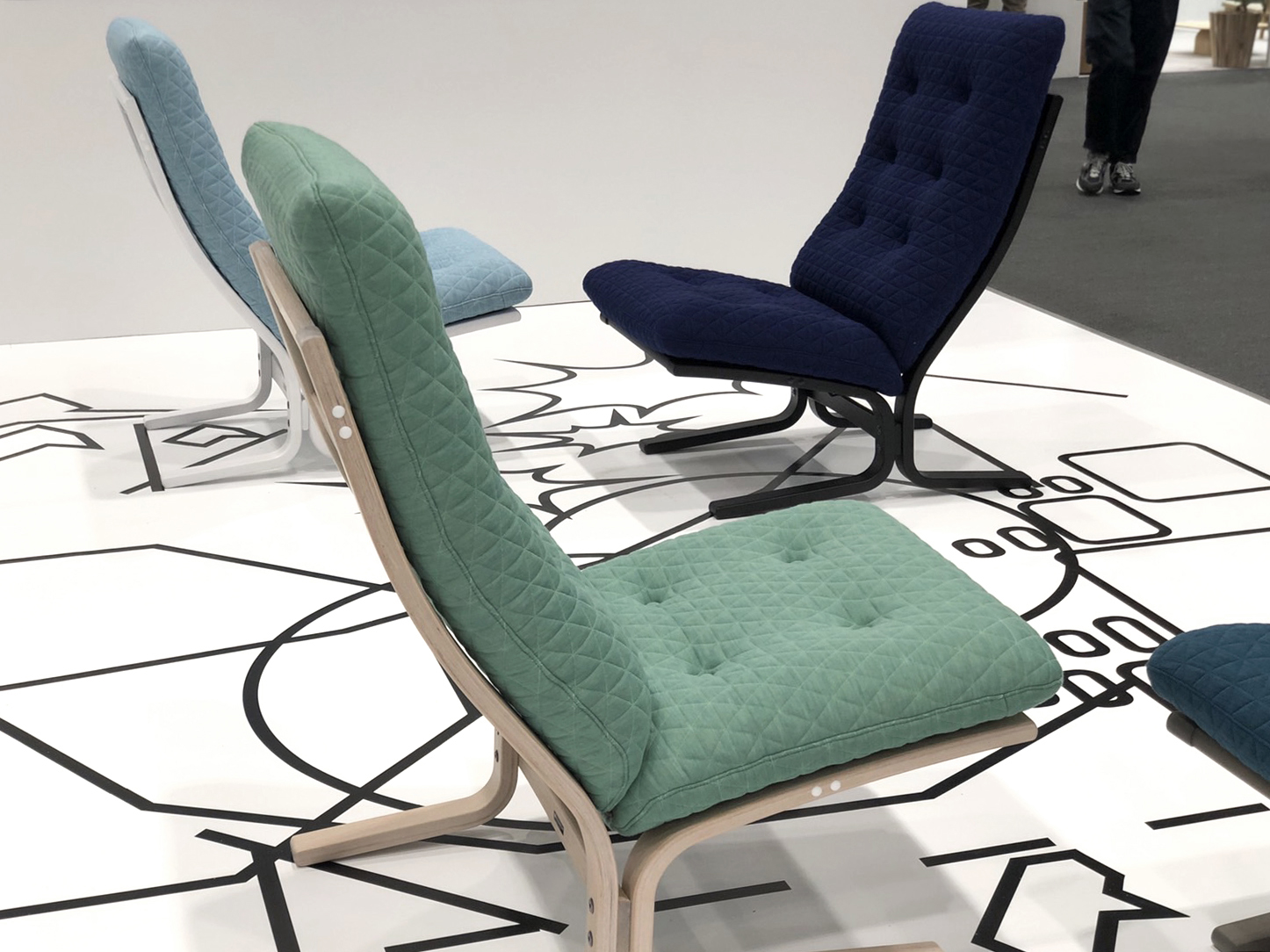

Conflict and Resolution
Conflict and Resolution
A cross-shaped (juji) discussion space for four. The ability to face each other while speaking creates moments that are sometimes calm, sometimes intense. It’s easy to envision familiar business scenes, like meetings or report presentations, unfolding in this setting.
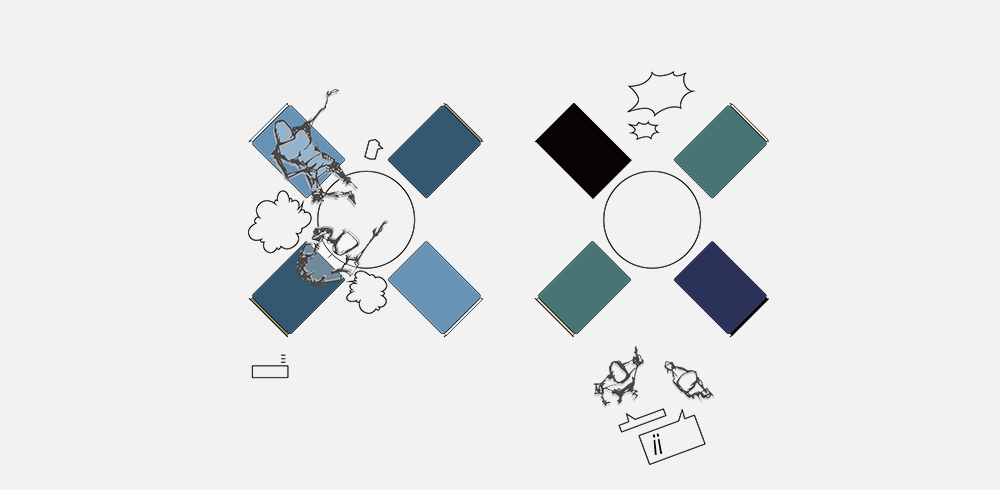
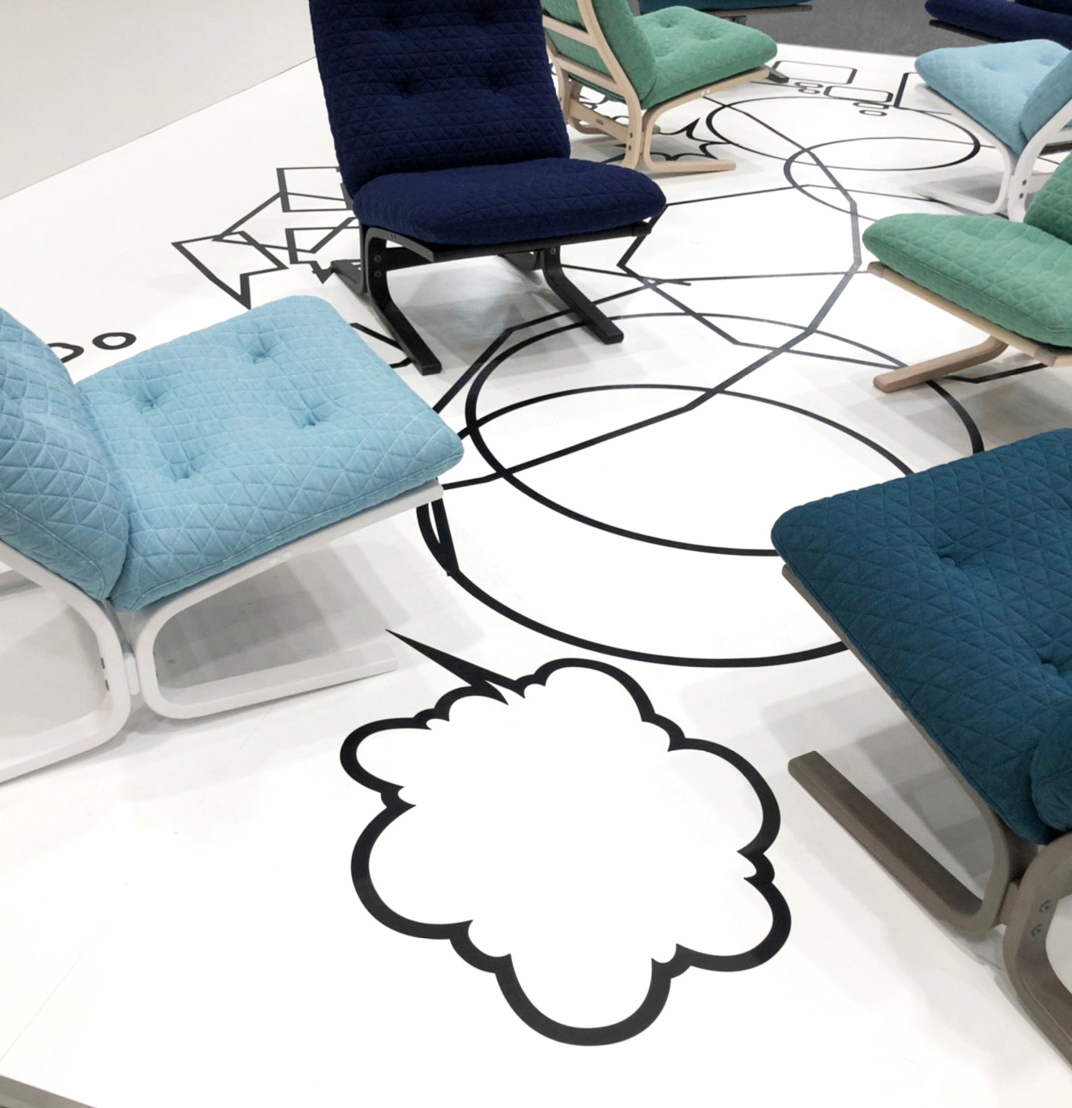
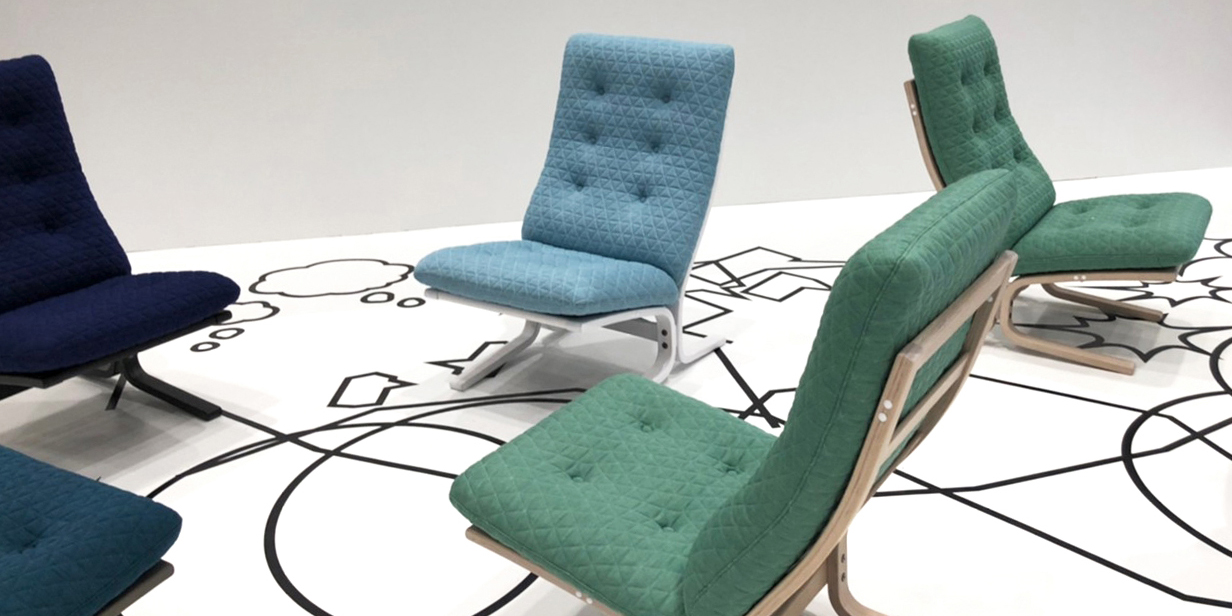
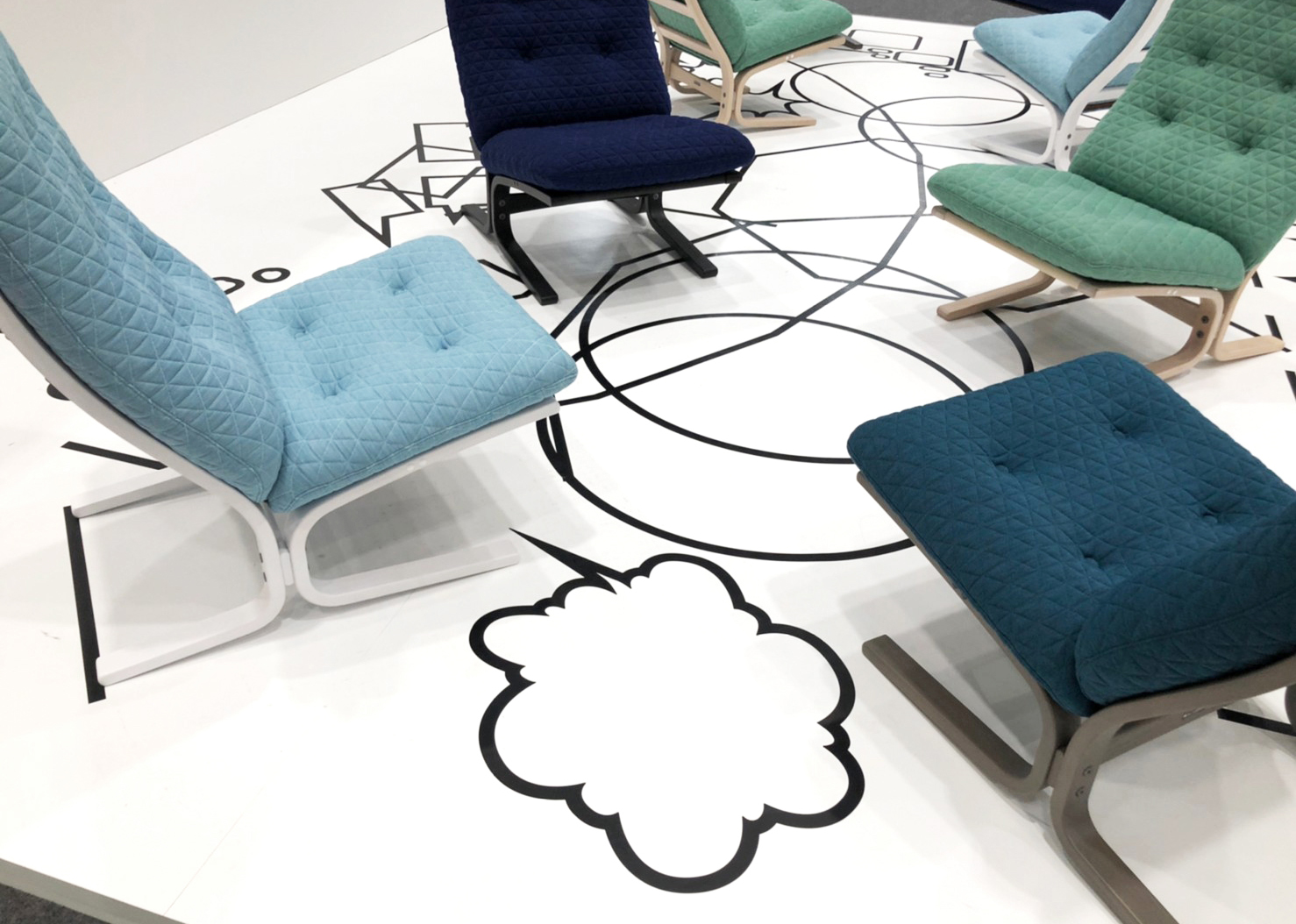
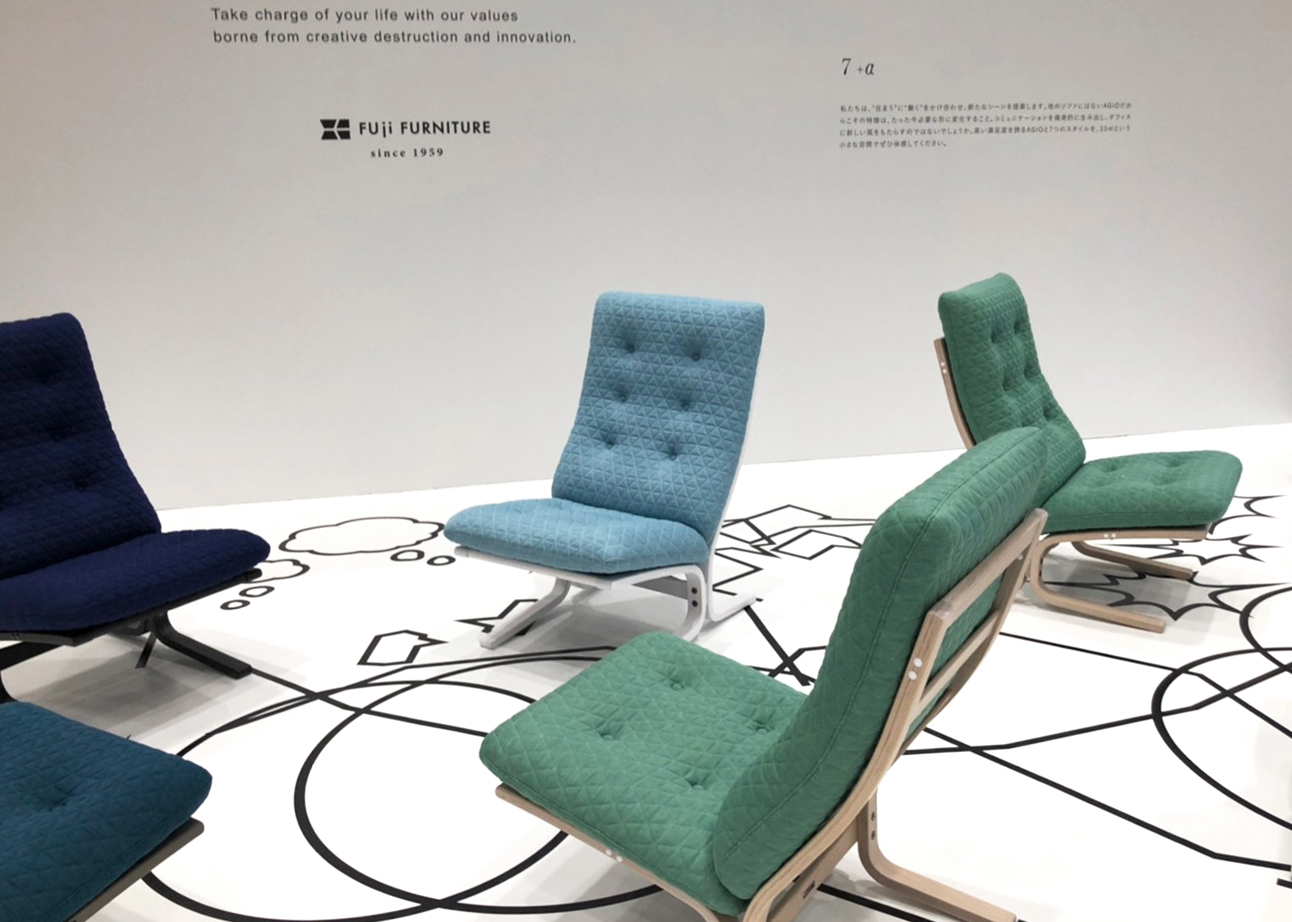

Creation and Destruction
Creation and Destruction
Even with a seemingly chaotic arrangement of scattered (san) sofas, this layout ensures personal space where no one meets your gaze or interrupts your solitude. The disordered surroundings seem to embrace each individual’s actions, enhancing their focus. It’s easy to imagine a scene where you’re completely immersed in your own world, undisturbed by what’s happening around you.

With eight AGIO units in a small space, you can imagine at least seven different scenes. The ability to move them freely allows for endless possibilities—combining a layout for two with one for four, or blending straight and wavy arrangements. The potential for creativity expands even further.
In spaces of varying sizes or with more or fewer units, new and unforeseen scenes await. AGIO, which can adapt to the shape you need in the moment, along with the interactions it fosters, may just define the next evolution of office spaces.
When we presented AGIO, we also prepared upholstery fabrics and paint colors that expand its possibilities.

“Triangle,” a pattern of interlocking triangles, is both unique and gently comforting. Its pleasing texture accentuates AGIO’s form, creating a striking visual effect.
While highly vibrant in color, the fabric still conveys a sense of calm, as if harmonizing with the warmth of the wood. This balance is achieved through its deep, rich tones—a testament to Kvadrat’s meticulous color creation, which never fails to captivate.
Within the Triangle range, we’ve focused on shades of blue. From hues with a hint of yellow to those with a touch of red, the palette is broad. Yet, even when placed side by side, the colors maintain a harmonious flexibility that allows for effortless coordination.


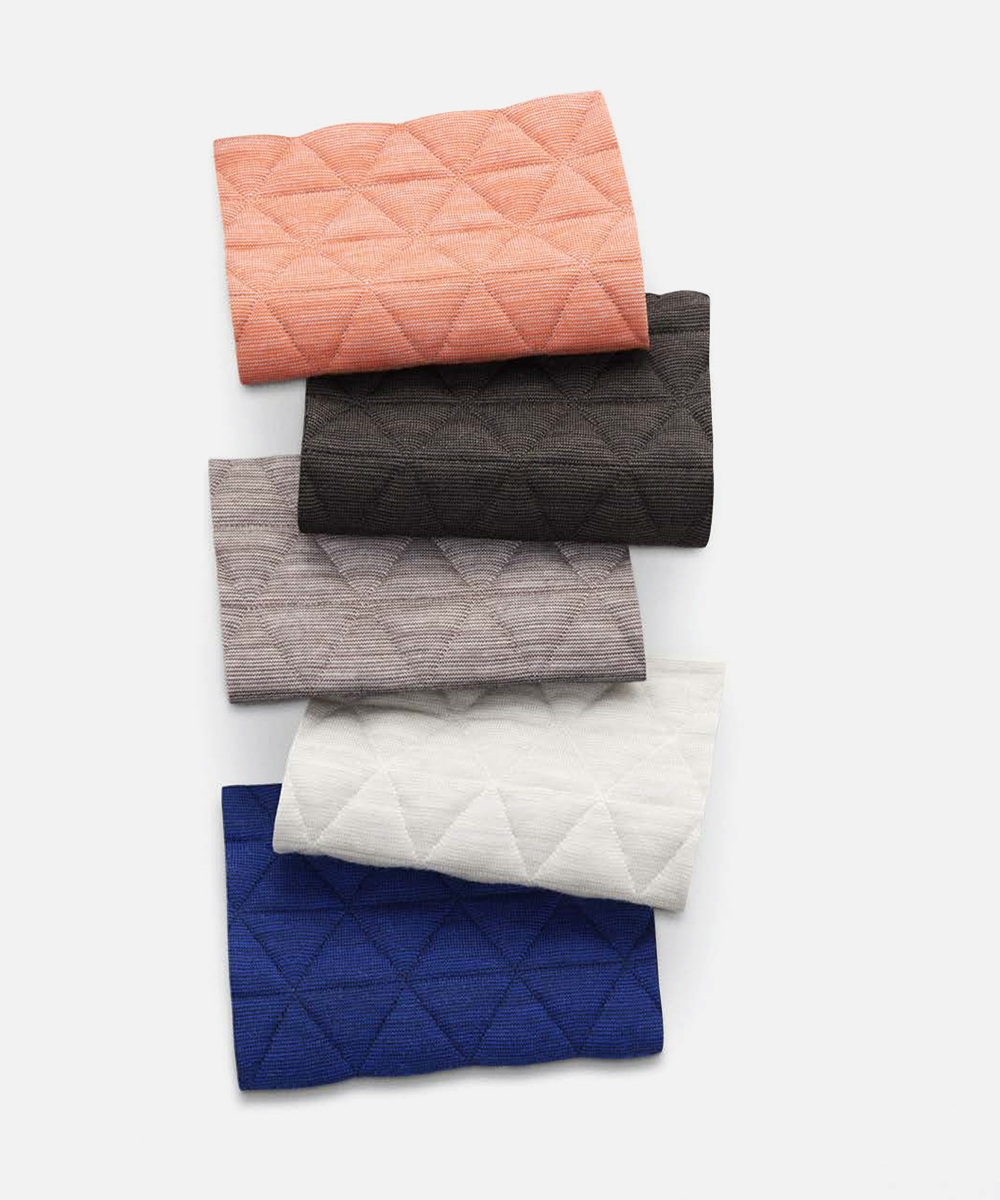
“Triangle,” designed by Bertjan Pot, is a knit textile distinguished by its rhythmic, interlocking triangle pattern, which combines softness and volume.
This unique texture offers both a sense of weight and cozy warmth. The double-knit structure, with a layer of polyester sandwiched between, gives the fabric a three-dimensional quality.
Since Triangle is knitted, not woven, it stretches in all directions, enhancing the organic shapes of furniture.
Its color palette offers a wide range of hues, from warm to cool tones.
Founded in Denmark in 1968, Kvadrat is deeply rooted in the traditions of Scandinavian design, offering a wide range of textile products. Committed to design innovation, Kvadrat produces high-performance design textiles, rugs, and acoustic and window covering solutions for both commercial and residential interiors. Each product reflects Kvadrat’s dedication to color, quality, simplicity, and technological advancement. Continuously pushing the boundaries of aesthetic, technical, and functional aspects of textiles, Kvadrat collaborates with leading designers, architects, and artists such as Miram Bäckström, Raf Simons, Ronan and Erwan Bouroullec, Thomas Demand, and Olafur Eliasson.
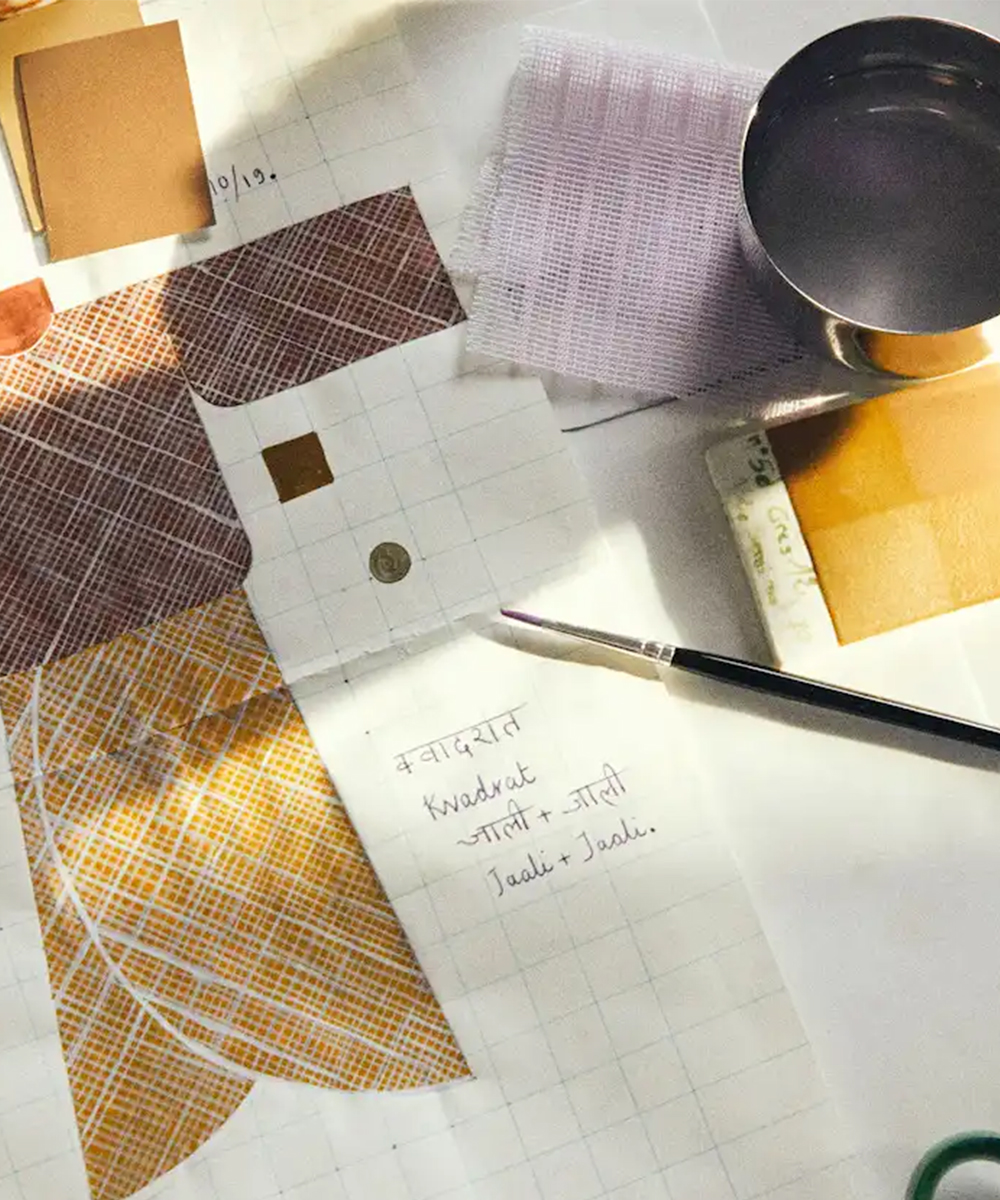
Founded in Denmark in 1968, Kvadrat is deeply rooted in the traditions of Scandinavian design, offering a wide range of textile products. Committed to design innovation, Kvadrat produces high-performance design textiles, rugs, and acoustic and window covering solutions for both commercial and residential interiors. Each product reflects Kvadrat’s dedication to color, quality, simplicity, and technological advancement. Continuously pushing the boundaries of aesthetic, technical, and functional aspects of textiles, Kvadrat collaborates with leading designers, architects, and artists such as Miram Bäckström, Raf Simons, Ronan and Erwan Bouroullec, Thomas Demand, and Olafur Eliasson.

The frame is made from oak veneer and is available in four finishes: black, gray, natural white, and white. The subdued color tones are designed to accentuate the rich hues of the upholstery and highlight the elegant curves of the frame.
Please note that natural white and white are special edition finishes and are not listed in the catalog. If these finishes catch your interest, please feel free to inquire via our contact form.
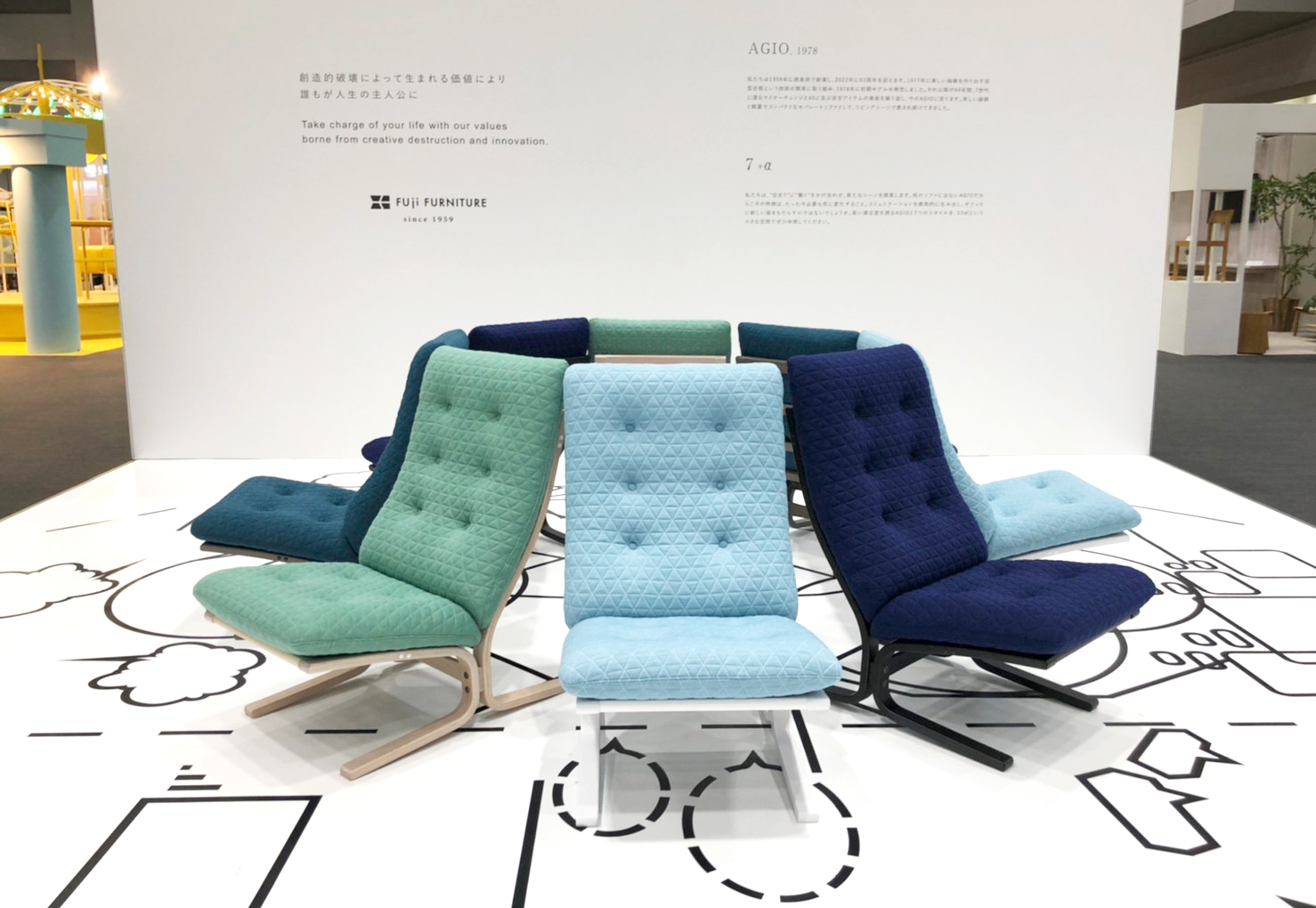
出展商品
肘無ソファ L08310 N
詳細は Productsページ をご確認ください。
品番は張り込み仕様の場合 L08310、カバーリング仕様の場合 L08670となります。
*塗装色の品番は以下の通りです。
ブラック:BP(オーク) / グレー:GP(オーク) / ナチュラルホワイト:特別色(オーク) / ホワイト:特別色(オーク)
*張地の品番は以下の通りです。
Triangle 732 / Triangle 932 / Triangle 772 / Triangle 792
*価格は以下の通りです。
「L08310 N × Triangle」¥143,000 (税込 ¥157,300)~
肘フレームの有無、サイズ、樹種、塗装色によって価格は異なります。
塗装色の特別色やKvadratの張り地、価格につきましては Contactフォーム よりお問い合わせください。